Residual Noise
April 3-5, 2025
CONCERTS | CONFERENCE | SOUND INSTALLATIONS
A three-day festival highlighting a wide range of contemporary sonic practices by prominent artists and scholars from Brown, RISD, and beyond.
Breadcrumb
Residual Noise
April 3-5, 2025
CONCERTS | CONFERENCE | SOUND INSTALLATIONS
A three-day festival highlighting a wide range of contemporary sonic practices by prominent artists and scholars from Brown, RISD, and beyond.
An IGNITE Series Campus Project
Curated by Professor Ed Osborn and Shawn Greenlee & Alex Chechile at the Studio for Research in Sound and Technology (SRST) at RISD. Produced by Brown Arts Institute and SRST. In partnership with the Brown Department of Visual Art, the Brown Department of Music, the John Nicholas Brown Center for Advanced Study, and the Marshall Woods Lectureship Foundation of Fine Arts Fund. Sponsored in part by the Lawton Wehle Fitt '74 Artist in Residence Endowment.
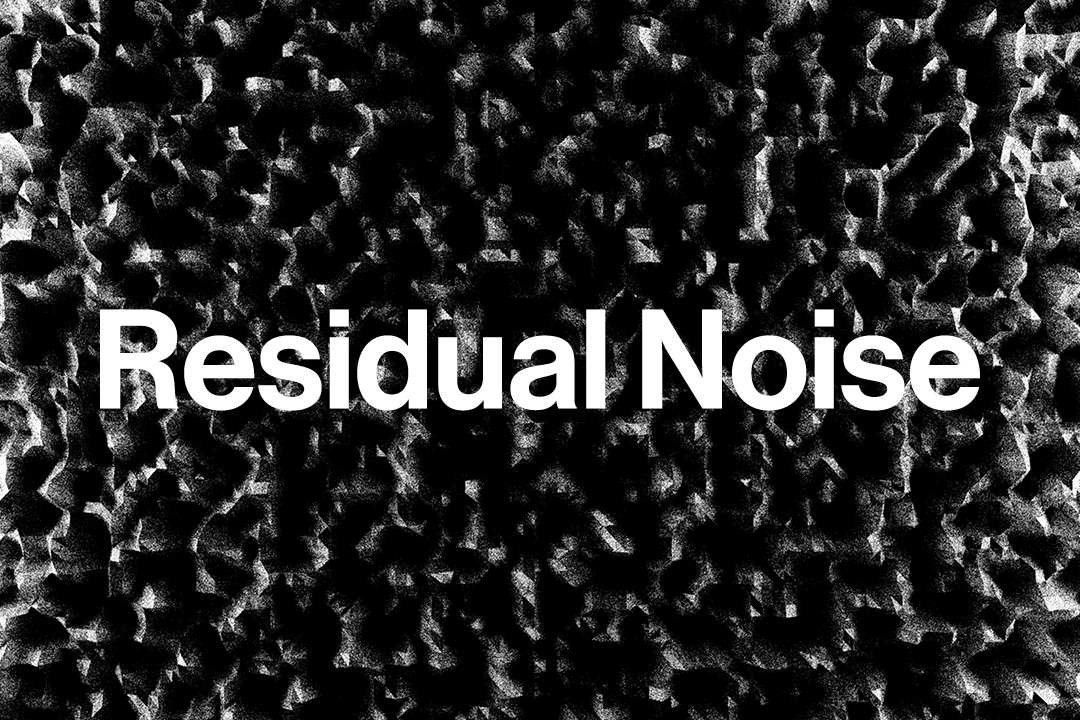
Through spatial audio concerts, installations, and a conference, this three-day festival highlights a wide range of work that takes place in sound: noise, voice, audio narrative, field recording, and related sonic practices. Spotlighting the ambisonic cube formation (a unique venue designed for spatial audio presentations) in Brown’s new Lindemann Performing Arts Center’s Main Hall, the events will feature works by Brown and RISD faculty and students, along with a number of prominent guest artists in the field. Residual Noise is a collaboration between Brown and the Studio for Research in Sound and Technology (SRST) at RISD with events occurring on both campuses.
Schedule & Event Information
SRST Spatial Audio Concert
7:00 PM – 9:00 PM
RISD, 20 Washington Place Auditorium
A concert by faculty and researchers affiliated with RISD’s Studio for Research in Sound and Technology (SRST). The program will feature works utilizing the IKO 3D audio speaker, a custom Wave Field Synthesis array, and 10.2 channel surround.
Ongoing Installations
The Tesseract: The Lindemann Main Hall
4:30 PM – 6:30 PM
Free and Open to the Public
Jim Moses, Before the Rainbow
Before the Rainbow generates an ambient, yet active soundscape. The piece meditates on sounds and rhythms from nature like wind, waves, raindrops, creatures, but the work is entirely synthesized from only streams of pink noise. Using virtual analog synthesis (VCV Rack), layers of modulated filtering and randomly generated pulses shape the work. A sparse aleatoric tonal scheme is introduced using filter resonance and resonant comb filtering. Spatialization is generated using modulation of ambisonic panning parameters. The work’s processes run live without ever repeating or looping. It is hoped that the music offers a thoughtful experience that recalls the complexity and beauty of everyday soundscapes.
Conference
9:30 AM – 5:30 PM
Location: Martinos Auditorium, Granoff Center for the Creative Arts
154 Angell Street, Providence, RIA one-day conference tied to the themes of the presented works during the two spatial audio concerts.
Coffee/Tea in Atrium: 9:30 AM – 10:00 AM
Morning Session: 10:00 AM – 12:00 PM
Featuring: Brian House, Yvette Janine Jackson, Will Johnson, and JayVe Montgomery
Lunch Break: 12:00 PM – 1:30 PM
Afternoon Session: 1:30 PM – 3:15 PM
Featuring: Paja Faudree, Suzanne Kite, and Eryk Salvaggio
Coffee/Tea Break in Atrium: 3:15 PM – 4:00 PM
Keynote: 4:00 PM – 5:30 PM
Lecture by Mack Hagood
Spatial Audio Concert #1
7:30 PM
Location: Ambisonic Cube, Main Hall, The Lindemann Performing Arts Center, 144 Angell Street, Providence, RI
Featuring works by Inga Chinilina, Yvette Janine Jackson with Jessica Shand, Bonnie Han Jones, James May, Mem1 (Mark and Laura Cetilia), and Joseph Butch Rovan
Ongoing Installations
The Tesseract: The Lindemann Main Hall
9:00 AM – 10:00 AM
12:30 PM – 1:30 PM
4:30 PM – 6:30 PM
Free and Open to the Public
Jim Moses, Before the Rainbow
Before the Rainbow generates an ambient, yet active soundscape. The piece meditates on sounds and rhythms from nature like wind, waves, raindrops, creatures, but the work is entirely synthesized from only streams of pink noise. Using virtual analog synthesis (VCV Rack), layers of modulated filtering and randomly generated pulses shape the work. A sparse aleatoric tonal scheme is introduced using filter resonance and resonant comb filtering. Spatialization is generated using modulation of ambisonic panning parameters. The work’s processes run live without ever repeating or looping. It is hoped that the music offers a thoughtful experience that recalls the complexity and beauty of everyday soundscapes.
Performance Lab, The Lindemann LL3
9:00 AM – 7:00 PM
Free and Open to the Public
Rotation of featured works by Brown students, including Allyson Packer and Nick Bentz, Kamari Carter, Sofîa Rocha, and Jessica Shand in collaboration with Alice Zhao.
SRST Open Studio
1:00 PM – 4:00 PM
Location: RISD, 15 Westminster Street, Mezzanine Level (same building at RISD's Fleet Library)
A demonstration and Q&A session with RISD’s Studio for Research in Sound and Technology (SRST). The presentation will feature SRST’s 25.4 channel ambisonic loudspeaker array and performances by Huichun Yang and Jess Skyleson.
This event has limited availability.
Spatial Audio Concert #2
7:30 PM
Location: Ambisonic Cube, Main Hall, The Lindemann Performing Arts Center, 144 Angell Street, Providence, RI
Featuring works by Isaac Barzso, Brian House, kite/wing (Suzanne Kite and Robbie Wing), JayVe Montgomery, Ed Osborn, Femi Shonuga-Fleming, and Jake Sokolov-Gonzalez and Peter Szendy.
Ongoing Installations
The Tesseract: The Lindemann Main Hall
4:30 PM – 6:30 PM
Free and Open to the Public
Jim Moses, Before the Rainbow
Before the Rainbow generates an ambient, yet active soundscape. The piece meditates on sounds and rhythms from nature like wind, waves, raindrops, creatures, but the work is entirely synthesized from only streams of pink noise. Using virtual analog synthesis (VCV Rack), layers of modulated filtering and randomly generated pulses shape the work. A sparse aleatoric tonal scheme is introduced using filter resonance and resonant comb filtering. Spatialization is generated using modulation of ambisonic panning parameters. The work’s processes run live without ever repeating or looping. It is hoped that the music offers a thoughtful experience that recalls the complexity and beauty of everyday soundscapes.
Performance Lab, The Lindemann LL3
4:00 PM – 7:00 PM
Free and Open to the Public
Rotation of featured works by Brown students, including Allyson Packer and Nick Bentz, Kamari Carter, Sofîa Rocha, and Jessica Shand in collaboration with Alice Zhao.
Featured Guests
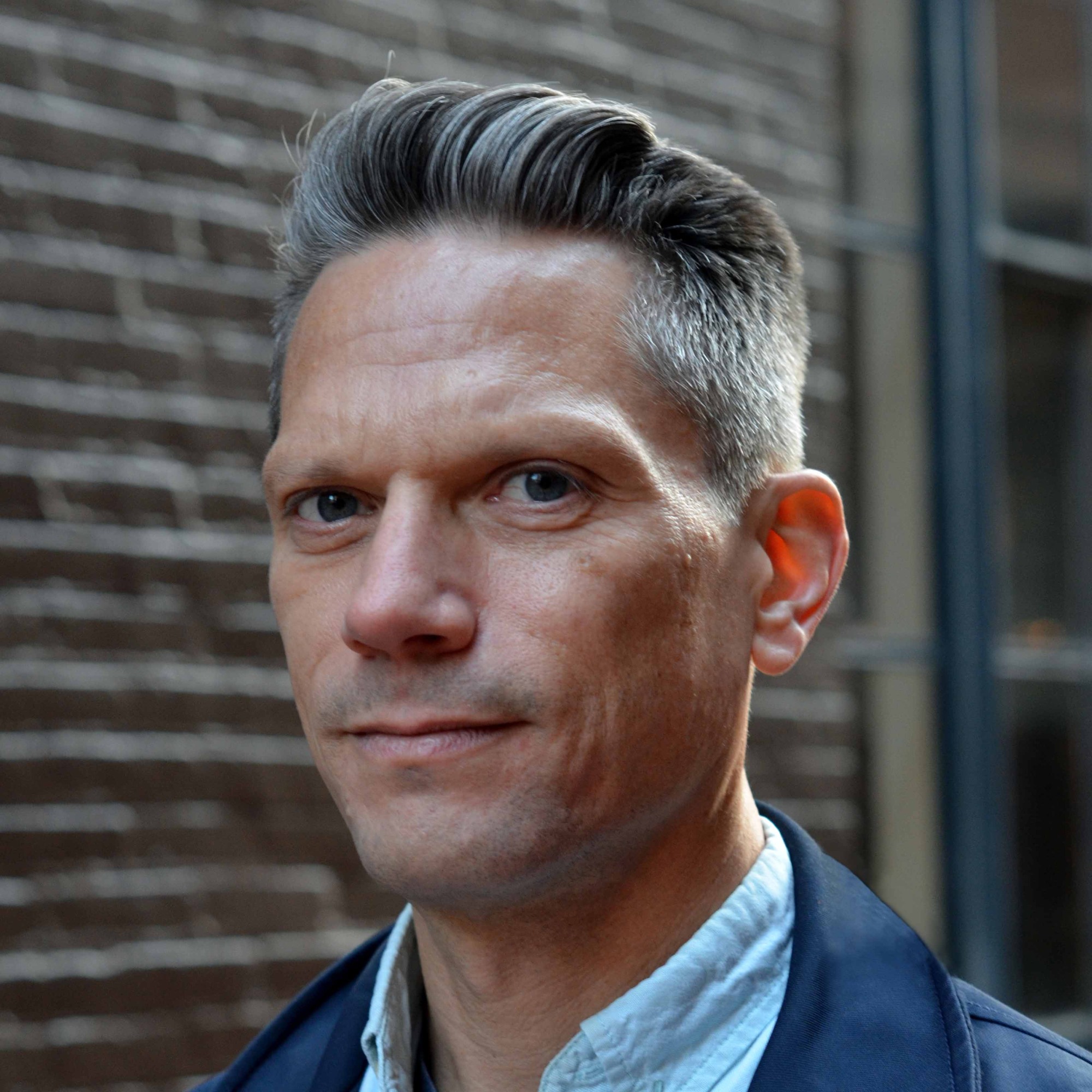 Mack Hagood is Professor of Media and Communication at Miami University and producer/host of the long-running sound studies podcast Phantom Power. He writes on subjects such as tinnitus, noise-canceling headphones, the noise of fans in NFL football stadiums, indie rock in Taiwan, the ontology of punch sounds in film, and podcasting as public scholarship. Hagood is the author of Hush: Media and Sonic Self Control (Duke UP, 2019). His current book project, The End of Listening: What We Lose When We Cancel Noise, is under contract with Penguin Press. Hagood was named a 2024 Public Scholar by the National Endowment for the Humanities.
Mack Hagood is Professor of Media and Communication at Miami University and producer/host of the long-running sound studies podcast Phantom Power. He writes on subjects such as tinnitus, noise-canceling headphones, the noise of fans in NFL football stadiums, indie rock in Taiwan, the ontology of punch sounds in film, and podcasting as public scholarship. Hagood is the author of Hush: Media and Sonic Self Control (Duke UP, 2019). His current book project, The End of Listening: What We Lose When We Cancel Noise, is under contract with Penguin Press. Hagood was named a 2024 Public Scholar by the National Endowment for the Humanities.
mactrasound.com/
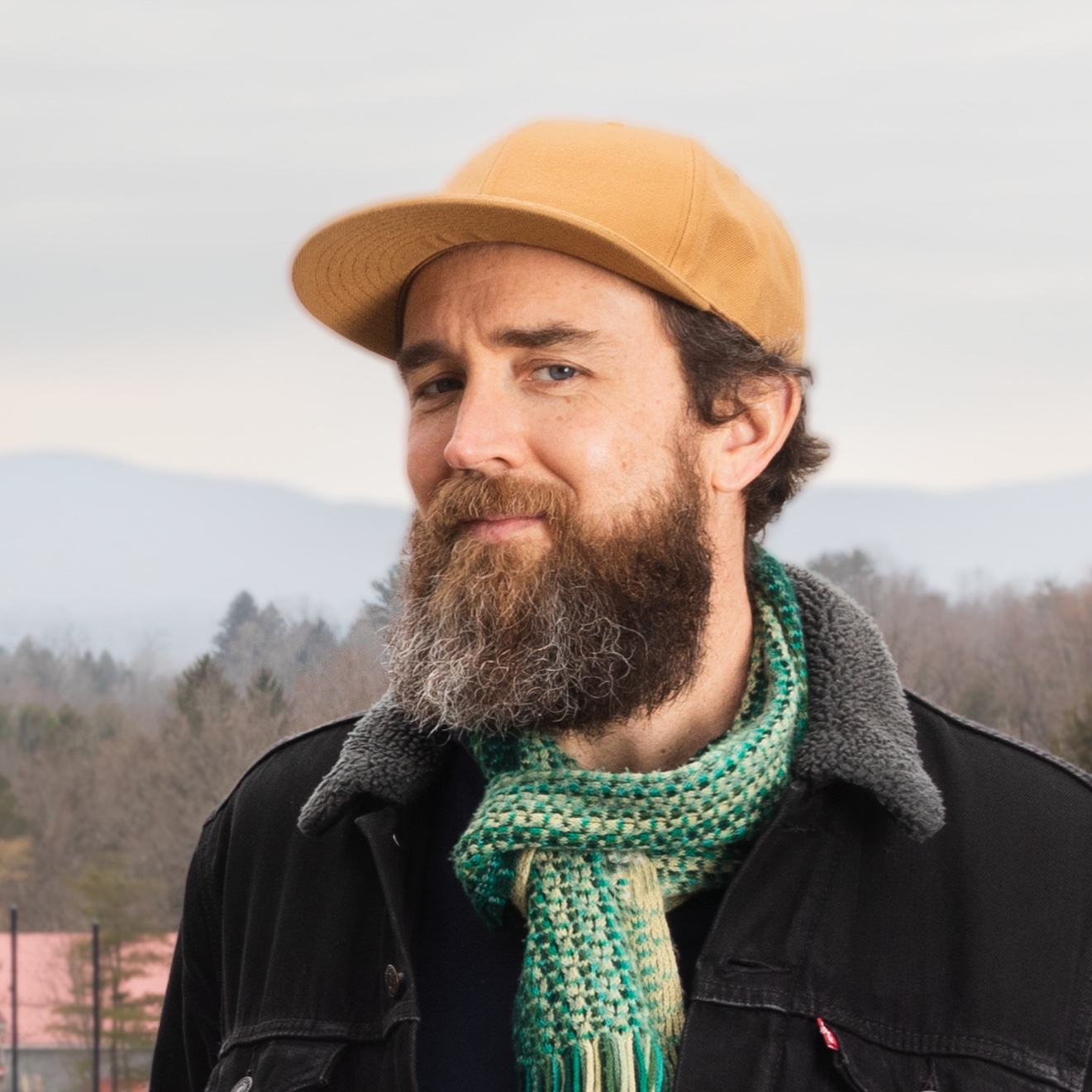 Brian House (he/him) is an artist who investigates the rhythms of human and nonhuman systems. Through sound, subversive technology, and multidisciplinary research, he makes our interdependencies audible in order to imagine new political realities. His current project, Macrophones, explores atmospheric infrasound as a means of listening to the climate crisis.
Brian House (he/him) is an artist who investigates the rhythms of human and nonhuman systems. Through sound, subversive technology, and multidisciplinary research, he makes our interdependencies audible in order to imagine new political realities. His current project, Macrophones, explores atmospheric infrasound as a means of listening to the climate crisis.
House is a Creative Capital awardee and has exhibited at MoMA, Los Angeles MOCA, Ars Electronica, ZKM Center for Art and Media, V&A Museum, Beall Center for Art + Technology, Cincinnati Contemporary Arts Center, Stockholm Kulturhust, Science Gallery Bangalore, Fridman Gallery, Issue Project Room, Eyebeam, and Brooklyn Botanic Garden, among other venues. The New York Times Magazine, WIRED, The Guardian, and TIME’s annual “Best Inventions” issue have featured his work, and his research has been published in Leonardo, Journal of Sonic Studies, Media Art Study and Theory, and e-flux Architecture.
House holds a PhD in computer music from Brown University and was Associate Scholar at Columbia University’s Center for Spatial Research. He is currently Assistant Professor of Art at Amherst College.
brianhouse.net
@h0use
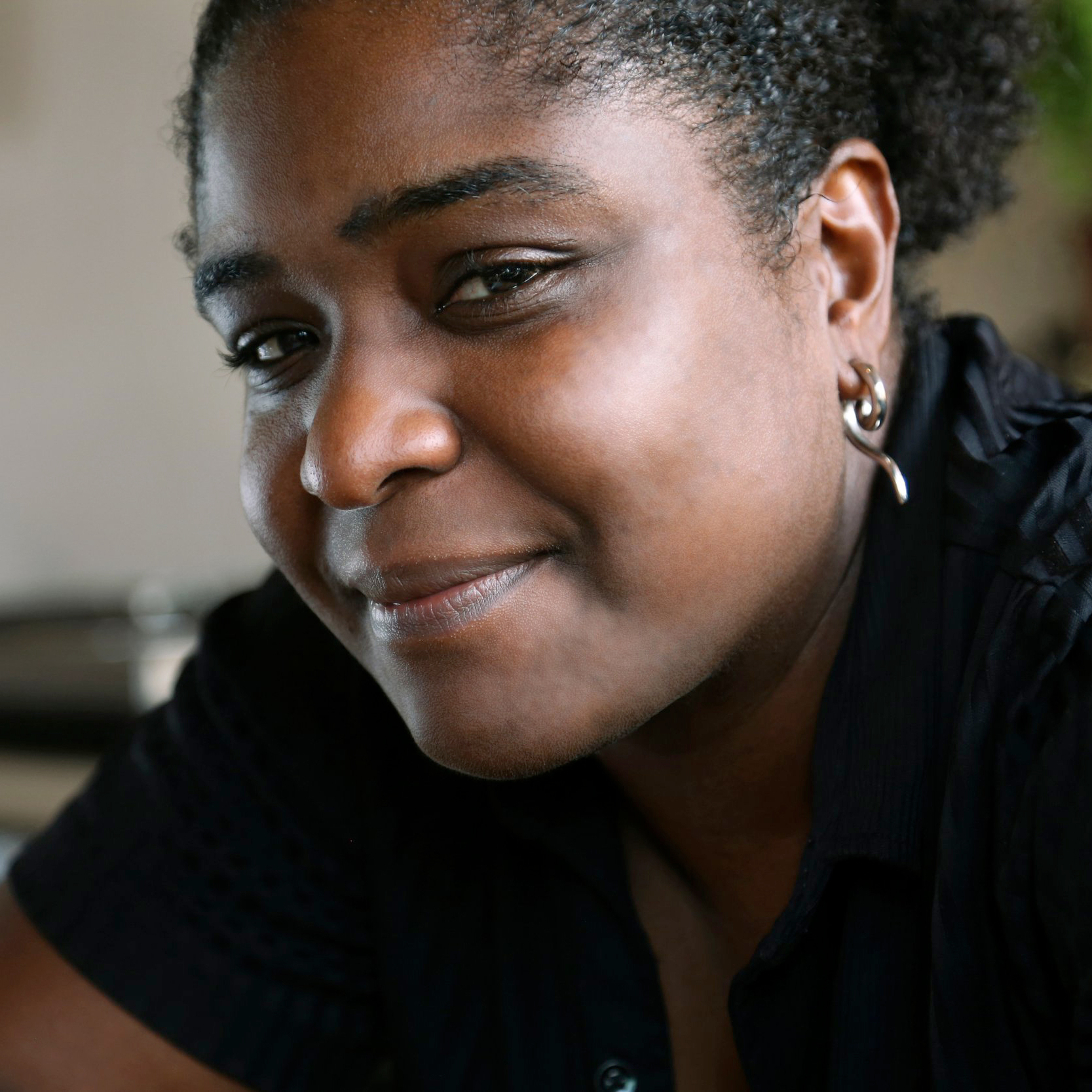
Yvette Janine Jackson is a composer and sound artist whose compositions have been heralded as “immersive non-visual films” (The Guardian). A Los Angeles native, Jackson was introduced to the world of tape splicing, analog synthesis, and computer music at the historic Columbia Computer Music Center in New York before designing sound for theatre in the San Francisco Bay Area where she was awarded the first Theatre Bay Area Eric Landisman Fellowship for Designers and the Dean Goodman Choice Award for Sound Design for The Shape of Things. She blends these experiences into her own aesthetic of narrative soundscape composition dubbed “radio opera.”
Jackson’s electroacoustic, chamber, and orchestral compositions have been commissioned internationally for concert, theatre, installation, and screen. Jackson’s projects often draw from history to examine relevant social issues. She has collaborated with historian of science and author Naomi Oreskes on Doubt for the Artivism for Earth Initiative featured at the United Nations Climate Change Conference in Glasgow. Her album Freedom is described as “one of the most unique releases to chronicle the Black American experience” (The Wire). She has composed for Elisa New’s PBS series Poetry in America and Barclay DeVeau’s The Cassandra Project short film trilogy. Recent projects include Hello, Tomorrow! for orchestra and electronics co-commissioned by Carnegie Hall and American Composers Orchestra; T-Minus, A Radio Opera commissioned by the International Contemporary Ensemble; and Extant, an interactive composition for bass clarinet, cello, and game engine at ZKM Center for Art and Media in Karlsruhe, Germany. Her permanent installations Underground (Codes) and Destination Freedom can be experienced at Wave Farm in Acra, New York, and the International African American Museum in Charleston.
Jackson performs modular synthesizers as a solo artist and formed Radio Opera Workshop to perform her compositions, debuting at the Venice Music Biennale in 2022. The collective has featured Tommy Babin, Amy Cimini, Tia Fuller, Joy Guidry, Judith Hamann, Dawn Norfleet, Jonathan Piper, Davindar Singh, Esperanza Spalding, Rajna Swaminathan, Malesha Jessie Taylor, and Taiga Ultan.
yvettejackson.com
@yvettejaninejackson
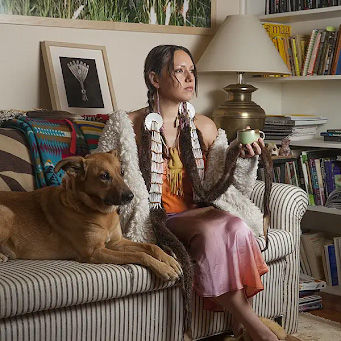 Suzanne Kite is an award-winning Oglála Lakȟóta artist, composer, and academic. Her scholarship and practice explore contemporary Lakȟóta ontology (the study of beinghood in Lakȟóta), artificial intelligence, and contemporary art and performance. She creates interfaces and arranges software systems that engage the whole body, in order to imagine new ethical AI protocols that interrogate past, present, and future Lakȟóta philosophies. Her interdisciplinary practice spans sound, video, performances, instrument building, wearable artwork, poetry, books, interactive installations, and more. Her work has been included in publications such as Atlas of Anomalous AI, Journal of Design and Science (MIT Press), and The Funambulist. Her award-winning article “Making Kin with Machines” and the sculpture Ínyan Iyé (Telling Rock) were featured on the cover of Canadian Art. Kite has been working with machine learning techniques since 2017 and developing body interfaces for performance since 2013. Her artwork and performance have been featured at numerous venues, including the Hammer Museum, Whitney Museum of American Art, PS122, Anthology Film Archives, Chronus Art Center, and Toronto Biennial of Art. Honors include the Pierre Elliott Trudeau Foundation Scholarship; Tulsa Artist Fellowship; Sundance New Frontiers Story Lab Fellowship, which allowed her to collaborate with top experimental artists and develop a film with AI techniques, Fever Dream (2021); Women at Sundance |Adobe Fellowship; and Common Field Fellowship, among others. In fall 2022, she gave a talk at Bard as part of the Disturbance, Re-Animation, and Emergent Archives conference, hosted by the Rethinking Place: Bard-on-Mahicantuck, a three-year project that proposes a Native American and Indigenous Studies approach to revitalize the undergraduate American Studies Program.
Suzanne Kite is an award-winning Oglála Lakȟóta artist, composer, and academic. Her scholarship and practice explore contemporary Lakȟóta ontology (the study of beinghood in Lakȟóta), artificial intelligence, and contemporary art and performance. She creates interfaces and arranges software systems that engage the whole body, in order to imagine new ethical AI protocols that interrogate past, present, and future Lakȟóta philosophies. Her interdisciplinary practice spans sound, video, performances, instrument building, wearable artwork, poetry, books, interactive installations, and more. Her work has been included in publications such as Atlas of Anomalous AI, Journal of Design and Science (MIT Press), and The Funambulist. Her award-winning article “Making Kin with Machines” and the sculpture Ínyan Iyé (Telling Rock) were featured on the cover of Canadian Art. Kite has been working with machine learning techniques since 2017 and developing body interfaces for performance since 2013. Her artwork and performance have been featured at numerous venues, including the Hammer Museum, Whitney Museum of American Art, PS122, Anthology Film Archives, Chronus Art Center, and Toronto Biennial of Art. Honors include the Pierre Elliott Trudeau Foundation Scholarship; Tulsa Artist Fellowship; Sundance New Frontiers Story Lab Fellowship, which allowed her to collaborate with top experimental artists and develop a film with AI techniques, Fever Dream (2021); Women at Sundance |Adobe Fellowship; and Common Field Fellowship, among others. In fall 2022, she gave a talk at Bard as part of the Disturbance, Re-Animation, and Emergent Archives conference, hosted by the Rethinking Place: Bard-on-Mahicantuck, a three-year project that proposes a Native American and Indigenous Studies approach to revitalize the undergraduate American Studies Program.
BFA, California Institute of the Arts; MFA, Milton Avery Graduate School, Bard College; PhD candidate, Concordia University. At Bard since 2023.
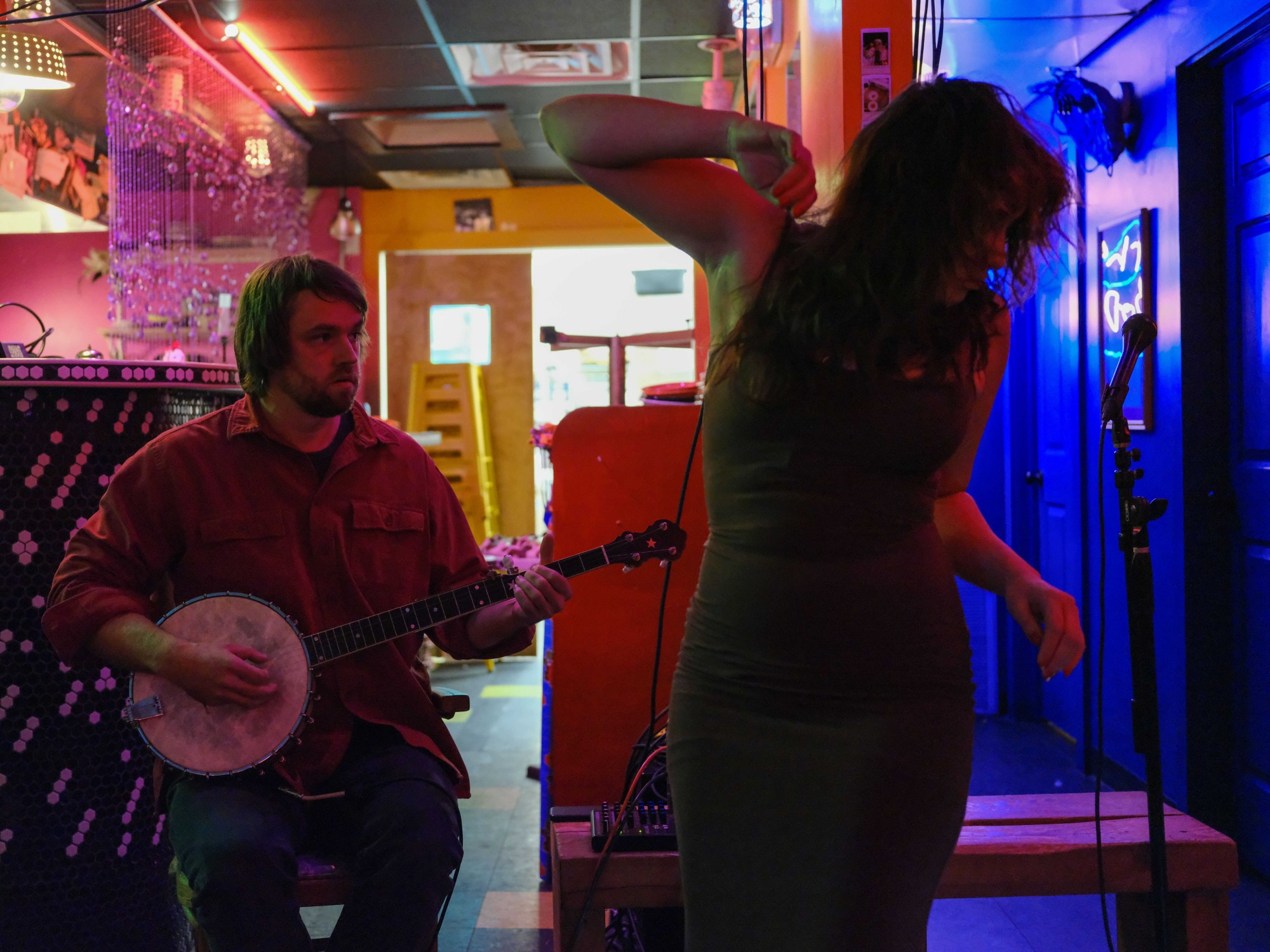 kite/wing is a performance duo based in the Hudson Valley, NY made up of Robbie Wing (Cherokee Nation citizen) installation artist, musician, and performer and Kite (Oglála Lakȟóta) performance artist, visual artist, and composer. kite/wing often comprises electronics, body interface, machine learning tools, banjo, violin, field recordings and more.
kite/wing is a performance duo based in the Hudson Valley, NY made up of Robbie Wing (Cherokee Nation citizen) installation artist, musician, and performer and Kite (Oglála Lakȟóta) performance artist, visual artist, and composer. kite/wing often comprises electronics, body interface, machine learning tools, banjo, violin, field recordings and more.
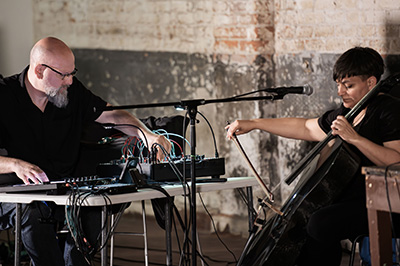 Founded in Los Angeles in 2003 and based in Providence RI since 2010, Mem1 seamlessly blends the sounds of cello and electronics to create a limitless palette of sonic possibilities. In their improvisation-based performances, Mark and Laura Cetilia’s uniquely subtle approach to extended cello technique and realtime modular synthesis patching results in the creation of a single voice rather than a duet between two individuals. Their music moves beyond melody, lyricism and traditional structural confines, revealing an organic evolution of sound that has been called “a perfect blend of harmony and cacophony” (Forced Exposure).
Founded in Los Angeles in 2003 and based in Providence RI since 2010, Mem1 seamlessly blends the sounds of cello and electronics to create a limitless palette of sonic possibilities. In their improvisation-based performances, Mark and Laura Cetilia’s uniquely subtle approach to extended cello technique and realtime modular synthesis patching results in the creation of a single voice rather than a duet between two individuals. Their music moves beyond melody, lyricism and traditional structural confines, revealing an organic evolution of sound that has been called “a perfect blend of harmony and cacophony” (Forced Exposure).
The Oxford University Press’ New Grove Dictionary of American Music describes Mem1 as “a unified cybernetic force, or complex cybernetic entity, comprised of two human artists plus their instruments and systems” whose “evolving, custom-built systems are as important an aspect of the duo’s achievements as their ever-innovative sound. Confounding the complexities inherent in human-machine and human-instrument relationship, Mem1 understands its music as a feedback loop between the past and present.”
Mem1 has toured extensively, performing at Café OTO (London), Issue Project Room (Brooklyn), Roulette (New York), the Laptopia Festival (Tel-Aviv), the Borealis Festival (Bergen), the San Francisco Electronic Music Festival, Los Angeles Contemporary Exhibitions, REDCAT / Disney Hall (Los Angeles), Electronic Church (Berlin), and Höjden Studios (Stockholm). They have taken part in residencies at Elektronmusikstudion EMS (Stockholm), Harvestworks (New York), STEIM (Amsterdam), O' (Milan), USF Verftet (Bergen), and SoundFjord (London). Throughout their career, they have collaborated with a variety of artists and musicians including the Penderecki String Quartet, Steve Roden, Stephen Vitiello, Frank Bretschneider, Jan Jelinek, Liora Belford, Kadet Kuhne, and Attila Faravelli. Together, Mem1 co-curates the record label Estuary Ltd. and are proud parents of one.
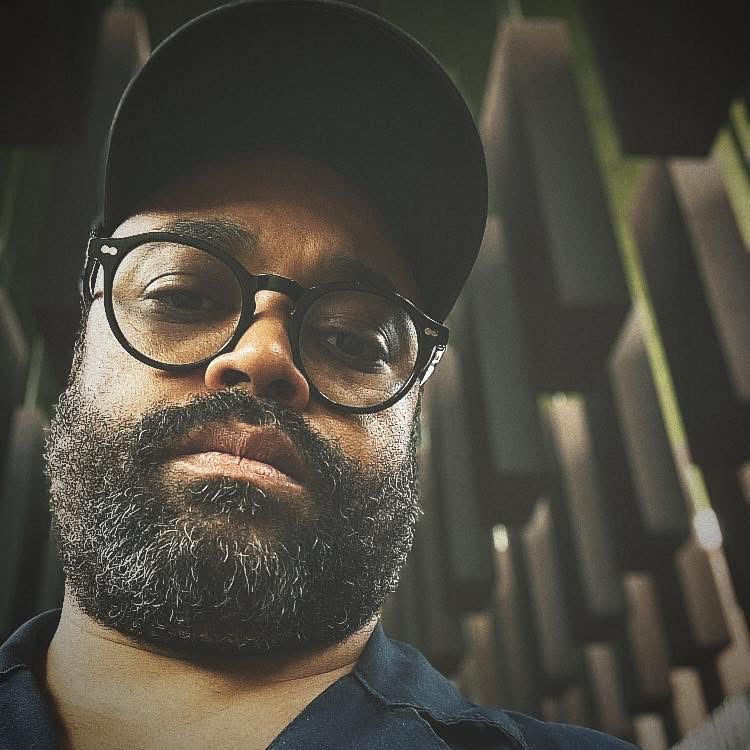 JayVe Montgomery is a site-specific improviser who breathes epigenetic listening into woodwind instruments and bells as a sustained decay descendant of the sound at the bottom of a slave ship. These soundings range from acoustic to electroacoustic; from horns and bells to samplers and turntables.
JayVe Montgomery is a site-specific improviser who breathes epigenetic listening into woodwind instruments and bells as a sustained decay descendant of the sound at the bottom of a slave ship. These soundings range from acoustic to electroacoustic; from horns and bells to samplers and turntables.
Of Jamaican and Louisiana Creole descent, Abstract Black / Jayve Montgomery was born at Ft. Hood, Texas on the last day of 1979 and raised a dependent of the department of defense in Berlin, Germany, before and after the wall fell; Rayne, Louisiana, before the frogs left; Columbia, SC, a home of the confederate flag; and Ft. Campbell, KY, home of the 101st Airborne Division and Jimi Hendrix’s turn to music. Montgomery earned a double BA in Japanese Studies and Anthropology from Centre College of KY and has also studied sound at the School of the Art Institute of Chicago. His staggering student loan debt makes him wish he hadn’t signed his life away at 17, 18, 19 & 20 to attend a predominantly white institution.
He is an outer music city sound artist and multi-instrumentalist of the Chicago school of Free, Creative, and Improvised musics, Sonic Healing Ministries sector. He was Senior Program Specialist for the Chicago Park District’s Inferno Mobile Recording Studio (2006-2013), a collaborative sound making program for youth and people with disabilities. He was also a curator and artist-in-residence at Brown Rice (2008-2012), an art space for listening in Chicago, IL.
Since moving to Nashville, he has become an integral member of the improvised and experimental music scene of the city and region; gaining local recognition for Nashville Scene solo performance of the year 2019; and becoming alum of Pitchfork Music Festival (Standing on the Corner), High Zero Festival of Improvised and Experimental Music, and True/False Film and Music Festival. In 2024 Montgomery started NEA grant-funded research on drowned towns in the Southeast US for a performance project called Lake Black Town. He has recently performed with such luminary sound artists as Tatsuya Nakatani, Maria Chavez, Ben Lamar Gay, and Lisa E. Harris.
jayvemontgomery.com
Eryk Salvaggio is a blend of hacker, researcher, designer and artist. He has curated exhibitions, published in academic journals, spoken at music and film festivals, and consulted on tech policy at the international level. He is a researcher on AI, art and education at the metaLab (at) Harvard University, the Emerging Technology Research Advisor to the Siegel Family Endowment, and a fellow and top contributor to Tech Policy Press. He holds an MSc in Media and Communications from the London School of Economics and an MSc in Applied Cybernetics from the Australian National University, and will pursue a PhD as a Gates Scholar at the University of Cambridge in 2025.
Named a “respected AI researcher” in The New Yorker, his work has been cited in pieces with The Atlantic, Wired, BBC4, The New York Times, MIT Technology Review, ArtForum, NBC News, Neural, Dirty, Mute Magazine, and Outland.
Art, Design & Technology
Eryk’s work examines the relationships between systems, power, and technology, particularly in generative AI. Art is a means of finding unique insights into techno-social assemblages, and his writing on art and tech has appeared in academic journals such as Leonardo, Communications of the ACM, IMAGE, and Patterns. Since 2001, his award-winning work has been shown at the Australian Center for the Moving Image, Bunjil Place (Australia), the CVPR Art Gallery, Michigan State University Science Museum, the UN Internet Governance Forum, Eyebeam, CalArts, Brown University, Turbulence, The Internet Archive, and at various film festivals. His work is referenced in numerous publications, including Jon Ippolito & Joline Blais’ At the Edge of Art, Alex Galloway's Protocol: How Control Exists After Decentralization, and Martha Langford’s Image & Imagination.
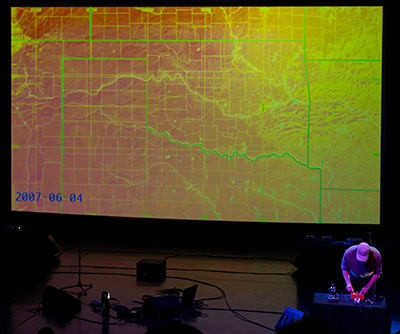 Robbie Wing is an artist from Tulsa, Oklahoma. A citizen of the Cherokee Nation, his practice encompasses composition, sonic sculpture, and performance. His installation, Cross Ties Song (2024), is currently on view at Tinworks Art in Bozeman, Montana.
Robbie Wing is an artist from Tulsa, Oklahoma. A citizen of the Cherokee Nation, his practice encompasses composition, sonic sculpture, and performance. His installation, Cross Ties Song (2024), is currently on view at Tinworks Art in Bozeman, Montana.
Robbie is pursuing an MFA in Music/Sound at Bard College and holds a master's degree in Urban Design from the University of Oklahoma. He has presented his work and performed at numerous venues, including the Portland Institute for Contemporary Art, the Tulsa Artist Fellowship Flagship Gallery, the Philbrook Museum, the University of Kent in Chatham, UK, the Institute for Advanced Studies in Kőszeg, Hungary, the Roy and Edna Disney CalArts Theater, and the Center for Arts, Research & Alliances.
Artists & Presenters
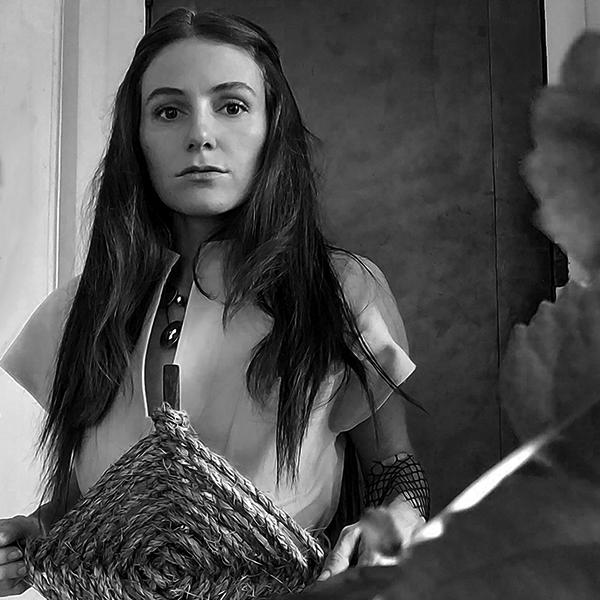 Maralie Armstrong’s multi-mediated works emphasize the evolution of spiritual and emotional expression via technology and seduce poetics from human-machine interaction. Her research probes the multifaceted interrelationships of gender and spirituality as well as appropriated uses of technologies throughout time. Her work includes performance, sculpture, photography, video and sound.
Maralie Armstrong’s multi-mediated works emphasize the evolution of spiritual and emotional expression via technology and seduce poetics from human-machine interaction. Her research probes the multifaceted interrelationships of gender and spirituality as well as appropriated uses of technologies throughout time. Her work includes performance, sculpture, photography, video and sound.
As a performer/vocalist/dancer, Armstrong has toured over a dozen countries with the projects Valise (solo), Humanbeast, Assembly of Light, Tem Eyos Ki, Bloodhuff and Soophie Nun Squad. Her collaborations in choreography and dance have been seen in a Nick Cave Soundsuit performance, Bonedust’s Fruit of the Ash and in Hana van der Kolk’s The Third Thing. Her work has also been featured in Vice Magazine, The Fader and the RISD Museum’s online journal Manual, among other publications.
maralie.com
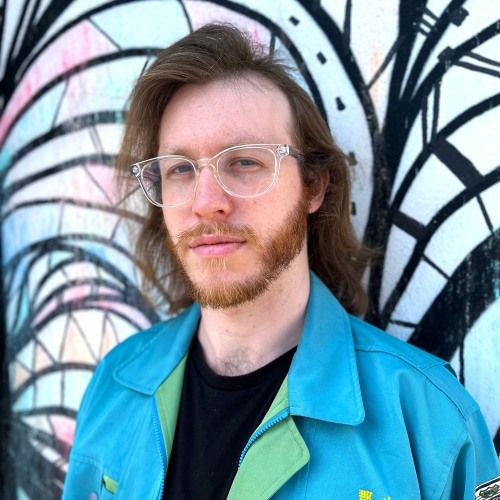 Composer, improviser, and sound artist Isaac Barzso strives to explore the activity of placemaking and the transfer of data and methods of communication between different mediums, aiming to create music and multimedia art that exists in the space between. Heavily influenced by disparate aspects of pop culture, such as the textures of post-rock music and the structures of literature and film, his music often utilises techniques within computer-generated or computer-assisted composition to close the gap between acoustic and electronic media. Isaac’s work has been featured at venues such as the Darmstädter Ferienkurse, SEAMUS, NYC Electronic Music Festival, and ICMC. In 2023 he graduated with distinction (M.M.) from the Royal Conservatory of The Hague.
Composer, improviser, and sound artist Isaac Barzso strives to explore the activity of placemaking and the transfer of data and methods of communication between different mediums, aiming to create music and multimedia art that exists in the space between. Heavily influenced by disparate aspects of pop culture, such as the textures of post-rock music and the structures of literature and film, his music often utilises techniques within computer-generated or computer-assisted composition to close the gap between acoustic and electronic media. Isaac’s work has been featured at venues such as the Darmstädter Ferienkurse, SEAMUS, NYC Electronic Music Festival, and ICMC. In 2023 he graduated with distinction (M.M.) from the Royal Conservatory of The Hague.
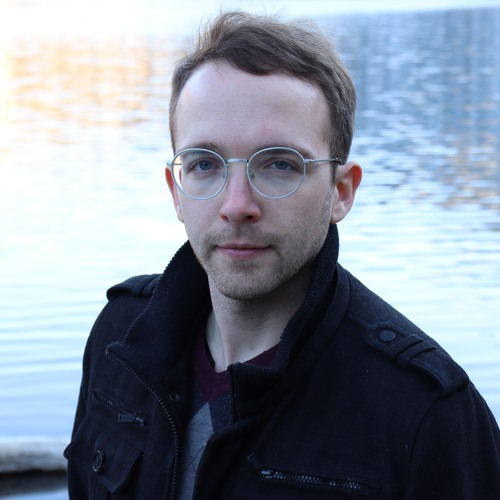 Nick Bentz (b. 1994 - Charleston, SC) is a composer, violinist, and multimedia artist whose work is drawn to remote fringes and recesses of experience. In his work he seeks to render intimately personal spaces imbued with an individual sense of storytelling and narrative. His art centers around the blurring, juxtaposition, and amalgamation of stylistic idioms into singular sonic statements. Nick's music has been performed by leading artists including the Philadelphia Orchestra, International Contemporary Ensemble, and yMusic, and featured at Lincoln Center, Kimmel Center, and the Museum of Modern Art in Shanghai. Current projects include works for Ensemble Intercontemporain and Sandbox Percussion. Nick holds a BM in composition and violin and an MM in violin from the Peabody Institute, and an MM in composition from the University of Southern California.
Nick Bentz (b. 1994 - Charleston, SC) is a composer, violinist, and multimedia artist whose work is drawn to remote fringes and recesses of experience. In his work he seeks to render intimately personal spaces imbued with an individual sense of storytelling and narrative. His art centers around the blurring, juxtaposition, and amalgamation of stylistic idioms into singular sonic statements. Nick's music has been performed by leading artists including the Philadelphia Orchestra, International Contemporary Ensemble, and yMusic, and featured at Lincoln Center, Kimmel Center, and the Museum of Modern Art in Shanghai. Current projects include works for Ensemble Intercontemporain and Sandbox Percussion. Nick holds a BM in composition and violin and an MM in violin from the Peabody Institute, and an MM in composition from the University of Southern California.
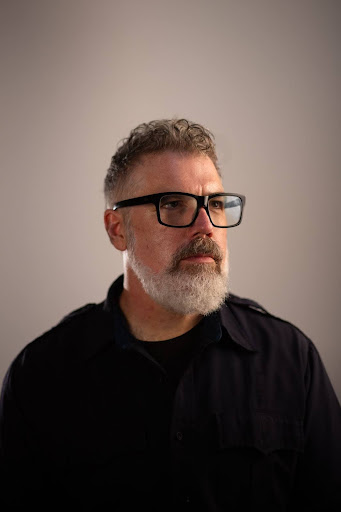 Joe Cantrell is a sound artist specializing in installations, compositions, and performances inspired by the consequences of technological objects and practices. His work examines the incessant acceleration of technology and media production, its ownership, and the waste it produces. In the rush to get the newest and shiniest things, the less new and less shiny are cast off: today's hot commodity is often tomorrow's garbage. In solidarity with these abandoned objects and the hands that put them together, Joe makes electronic feedback soundscapes using only discarded, obsolete and / or broken technology. It's a physical collaboration: the machines listen to themselves and act accordingly. Joe offers suggestions to them and they make sound together.
Joe Cantrell is a sound artist specializing in installations, compositions, and performances inspired by the consequences of technological objects and practices. His work examines the incessant acceleration of technology and media production, its ownership, and the waste it produces. In the rush to get the newest and shiniest things, the less new and less shiny are cast off: today's hot commodity is often tomorrow's garbage. In solidarity with these abandoned objects and the hands that put them together, Joe makes electronic feedback soundscapes using only discarded, obsolete and / or broken technology. It's a physical collaboration: the machines listen to themselves and act accordingly. Joe offers suggestions to them and they make sound together.
Joe has presented his research, art and performances for audiences around the world, including the Society for Electroacoustic Music in the US, the International Computer Music Association, the New Instruments for Musical Expression conference, as well as artist residencies in New York, London, Beijing, and Rotterdam.
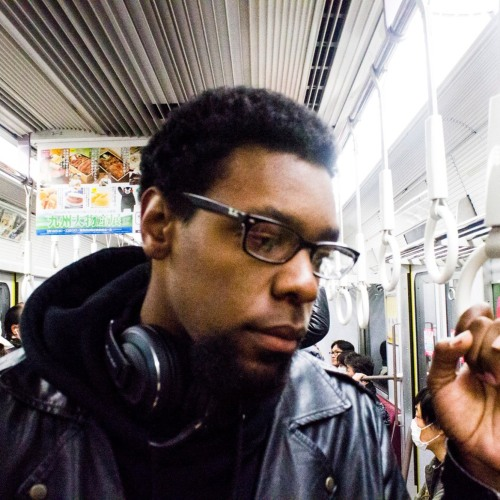 Kamari Carter (b. 1992; lives and works in NYC) is a producer, performer, sound designer, and installation artist primarily working with sound and found objects. Carter's practice circumvents materiality and familiarity through a variety of recording and amplification techniques to investigate notions such as space, systems of identity, oppression, control, and surveillance. Driven by the probative nature of perception and the concept of conversation and social science, he seeks to expand narrative structures through sonic stillness. Carter’s work has been exhibited at such venues as Automata Arts, MoMA, Mana Contemporary, Flux Factory, Fridman Gallery, Lenfest Center for the Arts, and Issue Project Room, to name a few. Carter holds a BFA in Music Technology from California Institute of the Arts and an MFA in Sound Art from Columbia University.
Kamari Carter (b. 1992; lives and works in NYC) is a producer, performer, sound designer, and installation artist primarily working with sound and found objects. Carter's practice circumvents materiality and familiarity through a variety of recording and amplification techniques to investigate notions such as space, systems of identity, oppression, control, and surveillance. Driven by the probative nature of perception and the concept of conversation and social science, he seeks to expand narrative structures through sonic stillness. Carter’s work has been exhibited at such venues as Automata Arts, MoMA, Mana Contemporary, Flux Factory, Fridman Gallery, Lenfest Center for the Arts, and Issue Project Room, to name a few. Carter holds a BFA in Music Technology from California Institute of the Arts and an MFA in Sound Art from Columbia University.
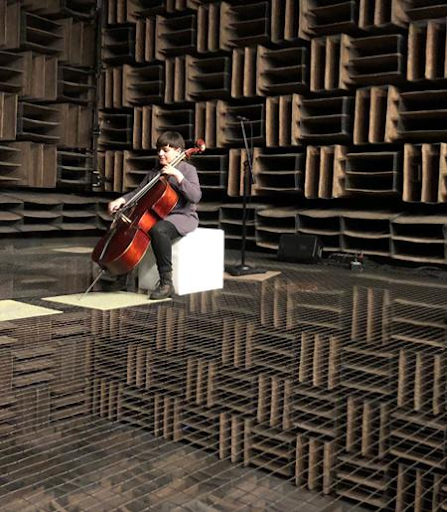 As a daughter of mixed heritage, Mexican-American musician, Laura Cetilia is at home with in-betweenness, straddling multiple worlds as cellist / composer / educator / artist while working within acoustic / electronic / traditional / experimental sound practices. Her compositions have been described as “unorthodox loveliness” (Boston Globe) and hailed as “alternately penetrating and atmospheric” (Sequenza 21). Her works have been performed by San Francisco Contemporary Music Players,TAK Ensemble, Loadbang, Mivos Quartet, Splinter Reeds, Dog Star Orchestra, a.pe.ri.od.ic, LCollective, Taceti Ensemble (Bangkok, Thailand) and others. The Grove Dictionary of American Music describes her electroacoustic duo Mem1 (established in 2003 with Mark Cetilia, electronics/ modular synth) as a “complex cybernetic entity” that “understands its music as a feedback loop between the past and present.” In her quartet Moons, she performs and composes works created by the all-female ensemble. Their recent eponymous album (released on Editions Verde) was listed as “Best Contemporary Classical Music”on Bandcamp in November 2024. And in the performer / composer collective Ordinary Affects she has collaborated with, commissioned and premiered works by composers such as Alvin Lucier, Christian Wolff, Michael Pisaro, Jürg Frey, Eva-Maria Houben, and Magnus Granberg. After receiving her D.M.A. in Music Composition in 2024 from Cornell, Laura returned to teaching cello and experimental music practices at Community MusicWorks, an organization that provides free instruments and lessons in underserved areas of Providence, RI.
As a daughter of mixed heritage, Mexican-American musician, Laura Cetilia is at home with in-betweenness, straddling multiple worlds as cellist / composer / educator / artist while working within acoustic / electronic / traditional / experimental sound practices. Her compositions have been described as “unorthodox loveliness” (Boston Globe) and hailed as “alternately penetrating and atmospheric” (Sequenza 21). Her works have been performed by San Francisco Contemporary Music Players,TAK Ensemble, Loadbang, Mivos Quartet, Splinter Reeds, Dog Star Orchestra, a.pe.ri.od.ic, LCollective, Taceti Ensemble (Bangkok, Thailand) and others. The Grove Dictionary of American Music describes her electroacoustic duo Mem1 (established in 2003 with Mark Cetilia, electronics/ modular synth) as a “complex cybernetic entity” that “understands its music as a feedback loop between the past and present.” In her quartet Moons, she performs and composes works created by the all-female ensemble. Their recent eponymous album (released on Editions Verde) was listed as “Best Contemporary Classical Music”on Bandcamp in November 2024. And in the performer / composer collective Ordinary Affects she has collaborated with, commissioned and premiered works by composers such as Alvin Lucier, Christian Wolff, Michael Pisaro, Jürg Frey, Eva-Maria Houben, and Magnus Granberg. After receiving her D.M.A. in Music Composition in 2024 from Cornell, Laura returned to teaching cello and experimental music practices at Community MusicWorks, an organization that provides free instruments and lessons in underserved areas of Providence, RI.
laura.cetilia.org
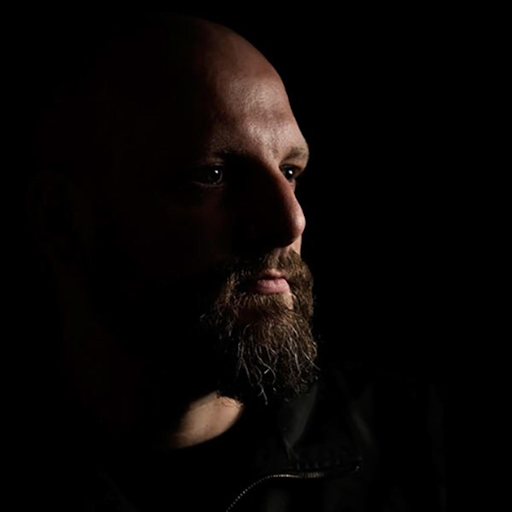 Mark Cetilia is an interdisciplinary artist whose practice exists at the nexus of analog and digital technologies. Exploring the possibilities of generative systems, Cetilia’s work is an exercise in carefully controlled chaos. Over the past two decades, he has worked to develop idiomatic performance systems utilizing custom hardware and software, manifesting in a rich tapestry of sound and image.
Mark Cetilia is an interdisciplinary artist whose practice exists at the nexus of analog and digital technologies. Exploring the possibilities of generative systems, Cetilia’s work is an exercise in carefully controlled chaos. Over the past two decades, he has worked to develop idiomatic performance systems utilizing custom hardware and software, manifesting in a rich tapestry of sound and image.
He is a member of the media art group Redux, recipients of a Creative Capital grant in Emerging Fields, and the electroacoustic ensemble Mem1, described by The Grove Dictionary of American Music as “a complex cybernetic entity” whose “evolving, custom-built systems are as important an aspect of the duo’s achievements as their ever-innovative sound.”
Cetilia’s work has been screened / installed at the ICA (London), Oboro (Montréal), O’ (Milan), MoBY (Bat Yam), SoundWalk (Long Beach), and R.K. Projects (Providence). He has performed widely at such venues as Kunstraum Walcheturm (Zurich), the Borealis Festival (Bergen), Café OTO (London), STEIM (Amsterdam), LACE (LA), Roulette (NYC), Goethe-Institut (Boston), Issue Project Room (Brooklyn), Menza Pri Koritu (Ljubljana), Uganda (Jerusalem), Sound of Mu (Oslo), and Electronic Church (Berlin).
His sound works have been published by MORE Records, YDLMIER, Lacryphagy, Interval, Radical Matters, Dragon’s Eye, IYNGES, and the Estuary Ltd. imprint, which he runs with his partner Laura Cetilia. He lives and works in Providence, RI, where he teaches at the Rhode Island School of Design and Brown University.
mark.cetilia.org
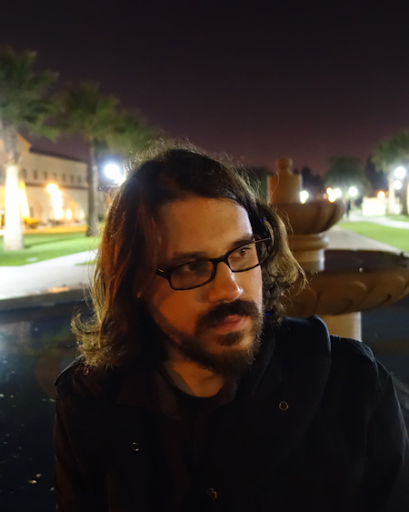 Alex Chechile is a sound artist, composer, and electronic artist whose work develops in parallel with research in neuroscience, psychoacoustics, and the biomechanics of hearing. With a particular interest in the relationship between sound and the body, his immersive compositions, installations, and performances aim to bring transparency to otherwise invisible processes in biological and technological systems.
Alex Chechile is a sound artist, composer, and electronic artist whose work develops in parallel with research in neuroscience, psychoacoustics, and the biomechanics of hearing. With a particular interest in the relationship between sound and the body, his immersive compositions, installations, and performances aim to bring transparency to otherwise invisible processes in biological and technological systems.
Questions that arise in his artistic work lead to formalized studies, and the results cyclically inform his sonic practice. Chechile is a leading researcher on the psychoacoustic study and creative application of difference tones, which are sounds that are generated in the inner ear and are perceived as localized within the head. His work exhibits how difference tones expand layers of sonic material to include sounds outside the acoustic space, as well as how they create an additional nested layer of spatial depth between loudspeakers and ears. Moving beyond the established two-tone difference tone paradigm, Chechile’s behavioral research shows up to seven additional types of difference tones are reliably perceived from multi-tone acoustic stimuli. In his series of pieces On the Sensations of Tone (2010— ), Chechile explores the physicality of sound and spatial depth using difference tones, and his Ear Tone Toolbox is the first widely available collection of software and modular instruments for evoking the phenomenon.
alexchechile.com
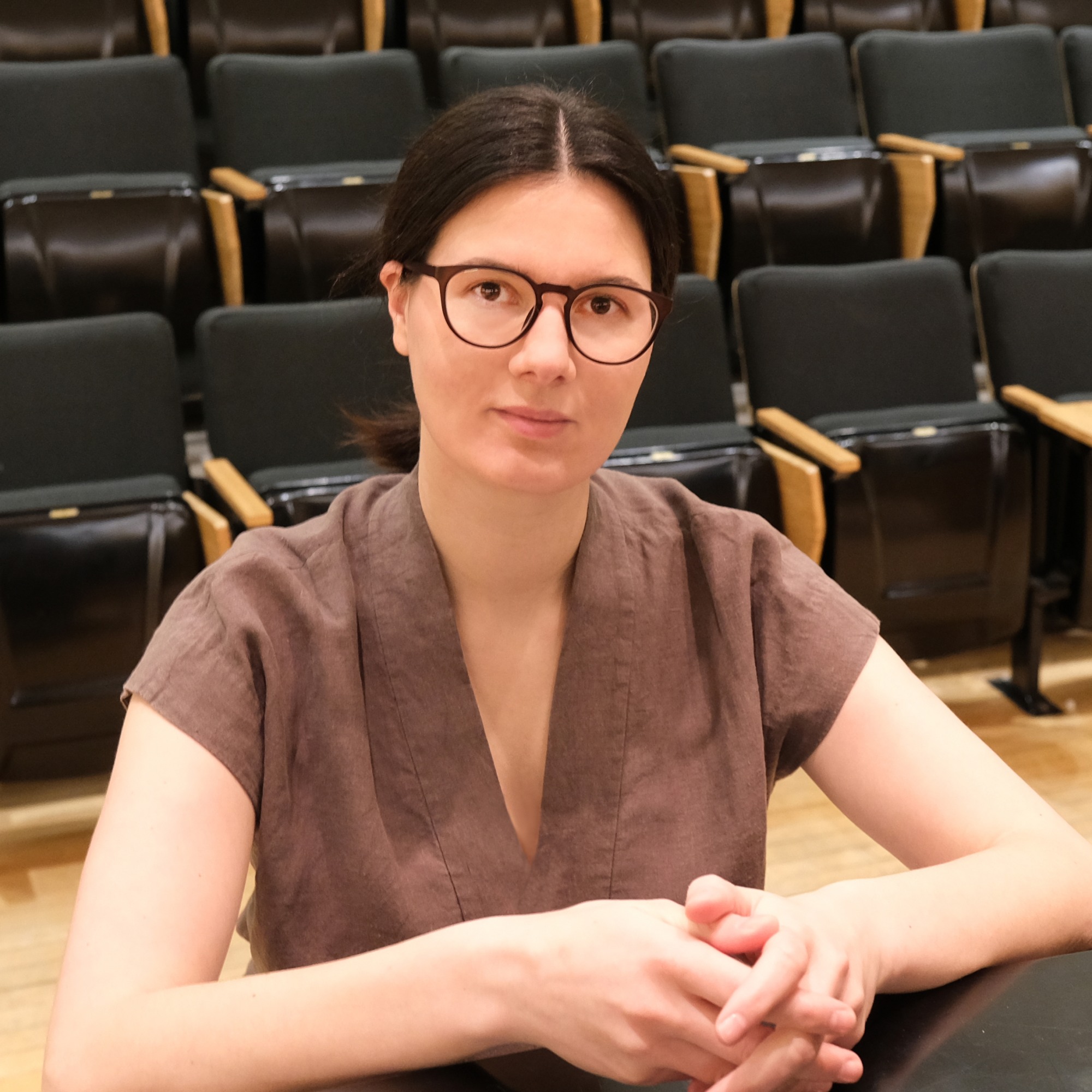
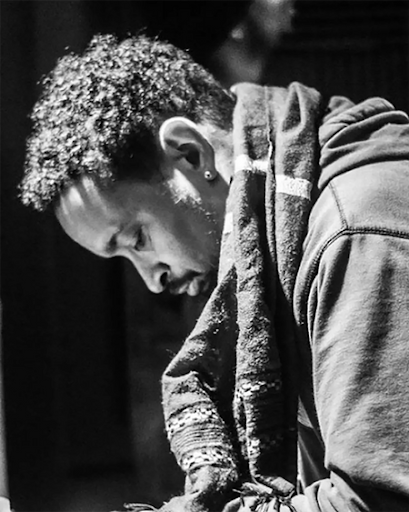 Michael Demps’ practice is fueled by a fascination with the nature of being—being in one’s body and more specifically, the social structures that confine the body’s ability to move through the world. It is important to understand that such experiences are different in different bodies in order to develop more empathetic relationships with one another, and celebrate more complex and nuanced ways of being. As an artist, Demps is dedicated to exploring notions of the Black interior through making. This interest permeates his collaborative and non-collaborative projects. During the past year he has had the opportunity to exhibit work that contends with the mapping of an interior interconnectivity to the collective through the personal and through somatic activation. His work ranges from abstract monoprint image generation and ghost printing to creating objects that serve as spiritual markings put forth to hold space for self-discovery, recovery and recuperation. These generative systems of making through recontextualization, improvisation and repetition serve as grounding values of his practice and exist in a fugitive space against authorship as a gatekeeper of racism and capitalism. The current cultural shift due to the pandemic has left Demps searching for ways to move his practice forward and engage with audiences in new ways.
Michael Demps’ practice is fueled by a fascination with the nature of being—being in one’s body and more specifically, the social structures that confine the body’s ability to move through the world. It is important to understand that such experiences are different in different bodies in order to develop more empathetic relationships with one another, and celebrate more complex and nuanced ways of being. As an artist, Demps is dedicated to exploring notions of the Black interior through making. This interest permeates his collaborative and non-collaborative projects. During the past year he has had the opportunity to exhibit work that contends with the mapping of an interior interconnectivity to the collective through the personal and through somatic activation. His work ranges from abstract monoprint image generation and ghost printing to creating objects that serve as spiritual markings put forth to hold space for self-discovery, recovery and recuperation. These generative systems of making through recontextualization, improvisation and repetition serve as grounding values of his practice and exist in a fugitive space against authorship as a gatekeeper of racism and capitalism. The current cultural shift due to the pandemic has left Demps searching for ways to move his practice forward and engage with audiences in new ways.
mjdemps.studio
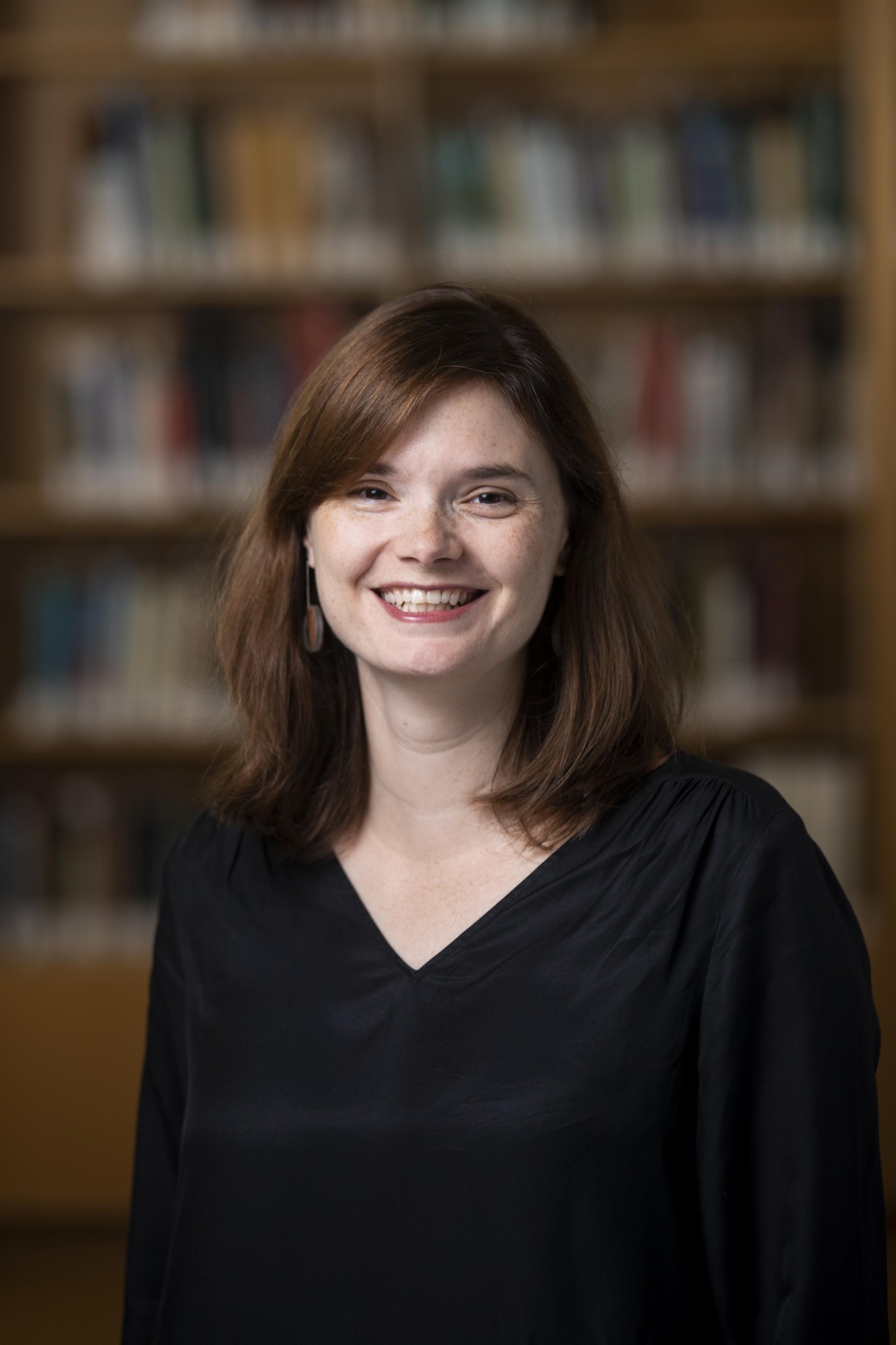 Emily I. Dolan joined the faculty at Brown University in 2019. Previously, she held positions at Harvard University and the University of Pennsylvania. Dolan works on the music of the late 18th and 19th centuries. She focuses on issues of orchestration, timbre, aesthetics, and instrumentality, exploring in the intersections between music, science, and technology. She has published articles in Current Musicology, Cambridge Opera Journal, Eighteenth-Century Music, Studia Musicologica, Keyboard Perspectives, and 19th-Century Music. Her first book, The Orchestral Revolution: Haydn and the Technologies of Timbre, was published by Cambridge University Press in 2013. In 2018, she guest edited a double issue of Opera Quarterly, "Vocal Organologies and Philologies." Outside of the 18th century, she is also interested in Sound Art and has published in Popular Music on indie pop and ideas of kitsch. Dolan was a faculty fellow in the Penn Humanities Forum 2008-09 and in 2009-2010, Dolan was a fellow at the Radcliffe Institute for Advanced Study. In 2022, The Oxford Handbook of Timbre (2021), which Dolan co-edited with Alexander Rehding received the Ruth A. Solie Prize from the American Musicological Society. With Emily McGregor and Arman Schwartz, Dolan co-edited Sonic Circulations, Music, Modernism, and the Politics of Knowledge, 1900-1960 which is forthcoming with the University of Pennsylvania Press. Currenlty, Dolan is finishing her second book, Instruments and Order, which explores ideas of instrumentality and is working on a new project on timbre and "timbrelessness."
Emily I. Dolan joined the faculty at Brown University in 2019. Previously, she held positions at Harvard University and the University of Pennsylvania. Dolan works on the music of the late 18th and 19th centuries. She focuses on issues of orchestration, timbre, aesthetics, and instrumentality, exploring in the intersections between music, science, and technology. She has published articles in Current Musicology, Cambridge Opera Journal, Eighteenth-Century Music, Studia Musicologica, Keyboard Perspectives, and 19th-Century Music. Her first book, The Orchestral Revolution: Haydn and the Technologies of Timbre, was published by Cambridge University Press in 2013. In 2018, she guest edited a double issue of Opera Quarterly, "Vocal Organologies and Philologies." Outside of the 18th century, she is also interested in Sound Art and has published in Popular Music on indie pop and ideas of kitsch. Dolan was a faculty fellow in the Penn Humanities Forum 2008-09 and in 2009-2010, Dolan was a fellow at the Radcliffe Institute for Advanced Study. In 2022, The Oxford Handbook of Timbre (2021), which Dolan co-edited with Alexander Rehding received the Ruth A. Solie Prize from the American Musicological Society. With Emily McGregor and Arman Schwartz, Dolan co-edited Sonic Circulations, Music, Modernism, and the Politics of Knowledge, 1900-1960 which is forthcoming with the University of Pennsylvania Press. Currenlty, Dolan is finishing her second book, Instruments and Order, which explores ideas of instrumentality and is working on a new project on timbre and "timbrelessness."
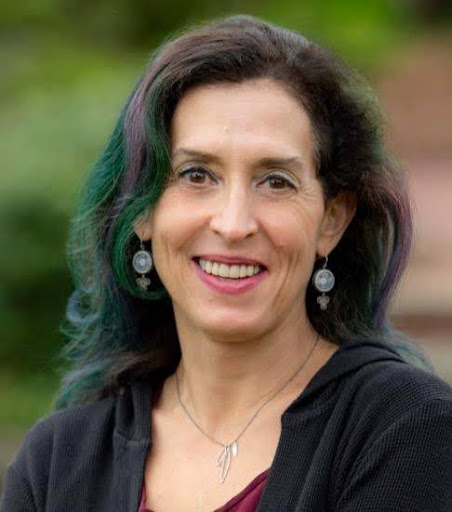 Paja Faudree is a linguistic anthropologist whose research interests include language and politics, indigenous literary and social movements, the interface between music and language, the ethnohistory of New World colonization, and the global marketing of indigenous rights discourses, indigenous knowledge, and plants. She received her PhD from the University of Pennsylvania and came to Brown following a Harper-Schmidt Postdoctoral Fellowship in the Social Sciences at the University of Chicago. She is affiliated with Brown's Center for Latin American and Caribbean Studies, the Center for the Study of Race and Ethnicity, Native American and Indigenous Studies, the Program in Science and Technology Studies, and Development Studies. Professor Faudree teaches courses on language and society, social movements in Latin America, language and politics, language and music, and the anthropology of drugs. She is also a published poet and playwright, and holds an MFA from Brown's literary arts program.
Paja Faudree is a linguistic anthropologist whose research interests include language and politics, indigenous literary and social movements, the interface between music and language, the ethnohistory of New World colonization, and the global marketing of indigenous rights discourses, indigenous knowledge, and plants. She received her PhD from the University of Pennsylvania and came to Brown following a Harper-Schmidt Postdoctoral Fellowship in the Social Sciences at the University of Chicago. She is affiliated with Brown's Center for Latin American and Caribbean Studies, the Center for the Study of Race and Ethnicity, Native American and Indigenous Studies, the Program in Science and Technology Studies, and Development Studies. Professor Faudree teaches courses on language and society, social movements in Latin America, language and politics, language and music, and the anthropology of drugs. She is also a published poet and playwright, and holds an MFA from Brown's literary arts program.
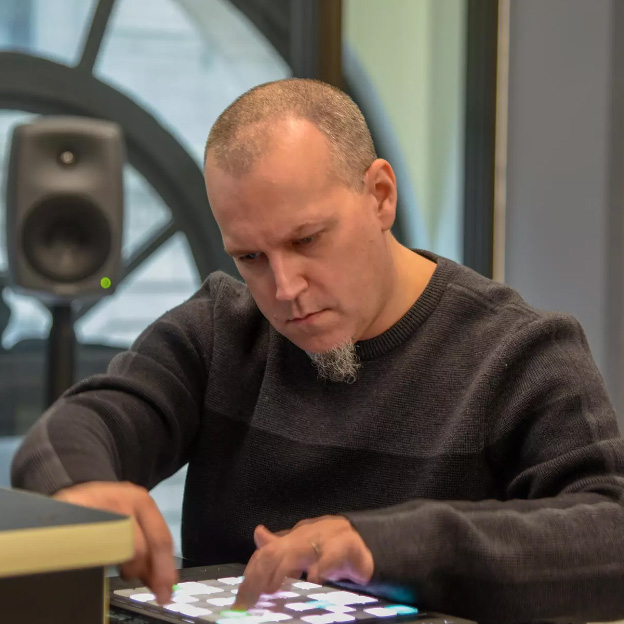 Shawn Greenlee is a composer, sound artist, and Professor at Rhode Island School of Design (RISD) where he leads the Studio for Research in Sound & Technology (SRST) and is the Department Head for Digital + Media. His recent work explores spatial audio, high density loudspeaker arrays, and erratic sound synthesis techniques.
Shawn Greenlee is a composer, sound artist, and Professor at Rhode Island School of Design (RISD) where he leads the Studio for Research in Sound & Technology (SRST) and is the Department Head for Digital + Media. His recent work explores spatial audio, high density loudspeaker arrays, and erratic sound synthesis techniques.
Greenlee has been active as a solo electronic / electroacoustic improvisor since 1997 and has toured extensively across the US and Europe. Conference and festival performances include New Interfaces for Musical Expression (2024 Utrecht, 2018 Blacksburg, 2015 Baton Rouge, 2014 London, 2013 Daejeon), International Computer Music Conference (2021 Santiago, 2018 Daegu, 2011 Huddersfield, 2005 Barcelona), BEAST FEaST (2017 Birmingham), PdCon16 (2016 New York), Cube Fest (2024, 2019, 2016 Blacksburg), Re-new (2013 Copenhagen), IN TRANSIT (2008 Berlin), and Elevate (2007 Graz), among others.
Greenlee’s solo and group discography spans over fifty releases. He is a founding member of Landed, active since 1997 and known for its deconstructed rock, rhythmic noise, and intense live performances. From 1999-2001, he performed with Six Finger Satellite.
Greenlee holds a Ph.D. in Computer Music and New Media from Brown University.
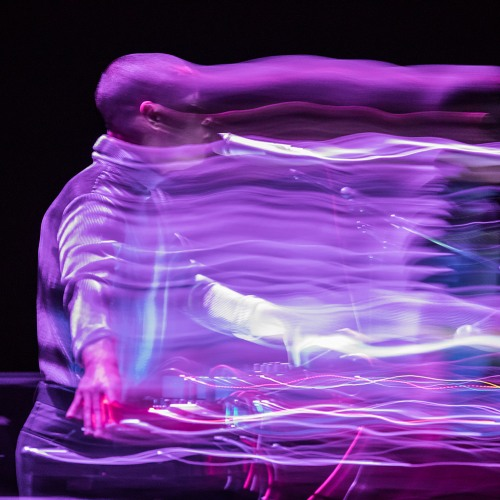 Will Johnson is an audio artist from the Bronx, New York. His work centers on blackness -- the material and immaterial conditions of space that shape sound into movement and historical record. He holds a B.A. in Interdisciplinary Studies from NYU-Gallatin. He is the recipient of the Jerome Foundation Fellowship for Sound Art/Composition (2018) and the McKnight Foundation Fellowship for Musicians (2019). His commercial work includes licensed sound for Acura, Beats Electronics, HBO and collaborative contributions to 2016 grammy-winning best electronic album Skin. His live performances have been commissioned by Lincoln Center, the Kitchen and MASS MoCA.
Will Johnson is an audio artist from the Bronx, New York. His work centers on blackness -- the material and immaterial conditions of space that shape sound into movement and historical record. He holds a B.A. in Interdisciplinary Studies from NYU-Gallatin. He is the recipient of the Jerome Foundation Fellowship for Sound Art/Composition (2018) and the McKnight Foundation Fellowship for Musicians (2019). His commercial work includes licensed sound for Acura, Beats Electronics, HBO and collaborative contributions to 2016 grammy-winning best electronic album Skin. His live performances have been commissioned by Lincoln Center, the Kitchen and MASS MoCA.
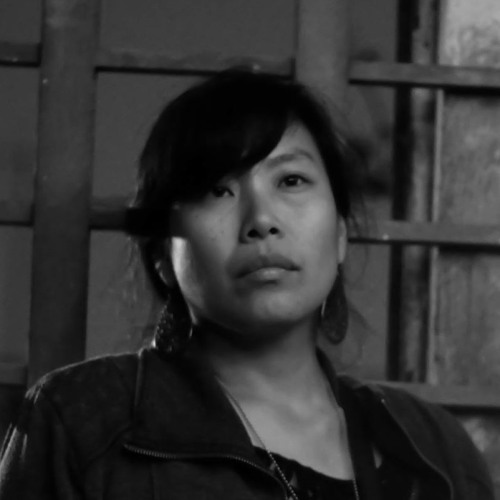 Bonnie Han Jones is a third-year doctoral student in the Department of Music, focusing on composition. She is an improvising musician, poet, and educator working with electronic sound, spatial audio technologies, archives, and text. Her work explores noise, sonic identity, listening, and sound as knowledge. Her current project explores the archival materials of transnational Korean adoptees and is informed by feminist, queer, and postcolonial theory, and the Black radical tradition. She holds an MFA from Bard College and has presented her work in the U.S. and abroad at venues such as National Sawdust, New York City; REDCAT, Los Angeles; ISSUE Project Room, Brooklyn; Museo Universitario Arte Contemporáneo, Mexico City, Mexico; and HKW (Haus der Kulturen der Welt), Berlin, Germany. She has released albums with Erstwhile, Northern Spy, Olof Bright, and Another Timbre. In 2010, along with Suzanne Thorpe she co-founded TECHNE, an organization that develops anti-racist, feminist workshops that center technology-focused art making, improvisation, and community collaboration. She was a 2018 recipient of the Foundation for Contemporary Arts Grants to Artists Award and was awarded a Fulbright Grant in 2004.
Bonnie Han Jones is a third-year doctoral student in the Department of Music, focusing on composition. She is an improvising musician, poet, and educator working with electronic sound, spatial audio technologies, archives, and text. Her work explores noise, sonic identity, listening, and sound as knowledge. Her current project explores the archival materials of transnational Korean adoptees and is informed by feminist, queer, and postcolonial theory, and the Black radical tradition. She holds an MFA from Bard College and has presented her work in the U.S. and abroad at venues such as National Sawdust, New York City; REDCAT, Los Angeles; ISSUE Project Room, Brooklyn; Museo Universitario Arte Contemporáneo, Mexico City, Mexico; and HKW (Haus der Kulturen der Welt), Berlin, Germany. She has released albums with Erstwhile, Northern Spy, Olof Bright, and Another Timbre. In 2010, along with Suzanne Thorpe she co-founded TECHNE, an organization that develops anti-racist, feminist workshops that center technology-focused art making, improvisation, and community collaboration. She was a 2018 recipient of the Foundation for Contemporary Arts Grants to Artists Award and was awarded a Fulbright Grant in 2004.
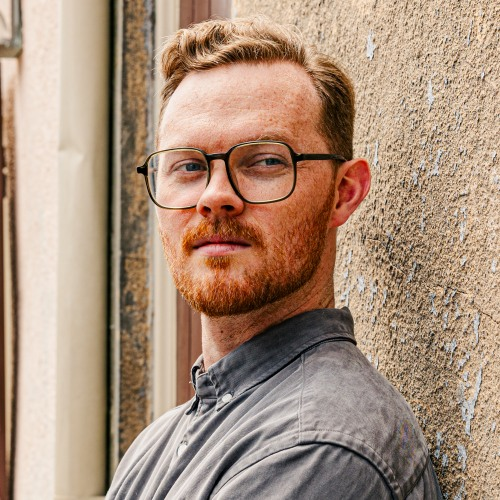 James May (b. 1994, Pittsburgh, PA) is a composer, improviser, teacher, and writer. His work explores unfurling, fragile spaces, generating unpredictable systems in which performers can dwell. He combines approaches such as improvisation environments, live electronics, notated scores, field recordings, extended vocal technique, and text, often inspired by the natural world or other art forms—especially film photography and literature. James is a member of Versipel New Music (New Orleans), has published writing in Sound American and RTÉ Culture, and was a 2024 Ucross Artist in Residence. He has collaborated on performances and recordings with Versipel, Apply Triangle, Hypercube, Chamber Choir Ireland and Paul Hillier, Birdfoot Festival, New Music on the Bayou, Stephanie Lamprea, Will Yager, Jamie Monck, the San Francisco Choral Artists, and Longleash. James was one of 12 recipients of the 2018-19 George J. Mitchell Scholarship, funding an MA in Experimental Sound Practice at University College Cork; prior, he earned an MM in Composition from the University of Louisville, and a BMus in Theory & Composition and a BA in English from The College of Wooster.
James May (b. 1994, Pittsburgh, PA) is a composer, improviser, teacher, and writer. His work explores unfurling, fragile spaces, generating unpredictable systems in which performers can dwell. He combines approaches such as improvisation environments, live electronics, notated scores, field recordings, extended vocal technique, and text, often inspired by the natural world or other art forms—especially film photography and literature. James is a member of Versipel New Music (New Orleans), has published writing in Sound American and RTÉ Culture, and was a 2024 Ucross Artist in Residence. He has collaborated on performances and recordings with Versipel, Apply Triangle, Hypercube, Chamber Choir Ireland and Paul Hillier, Birdfoot Festival, New Music on the Bayou, Stephanie Lamprea, Will Yager, Jamie Monck, the San Francisco Choral Artists, and Longleash. James was one of 12 recipients of the 2018-19 George J. Mitchell Scholarship, funding an MA in Experimental Sound Practice at University College Cork; prior, he earned an MM in Composition from the University of Louisville, and a BMus in Theory & Composition and a BA in English from The College of Wooster.
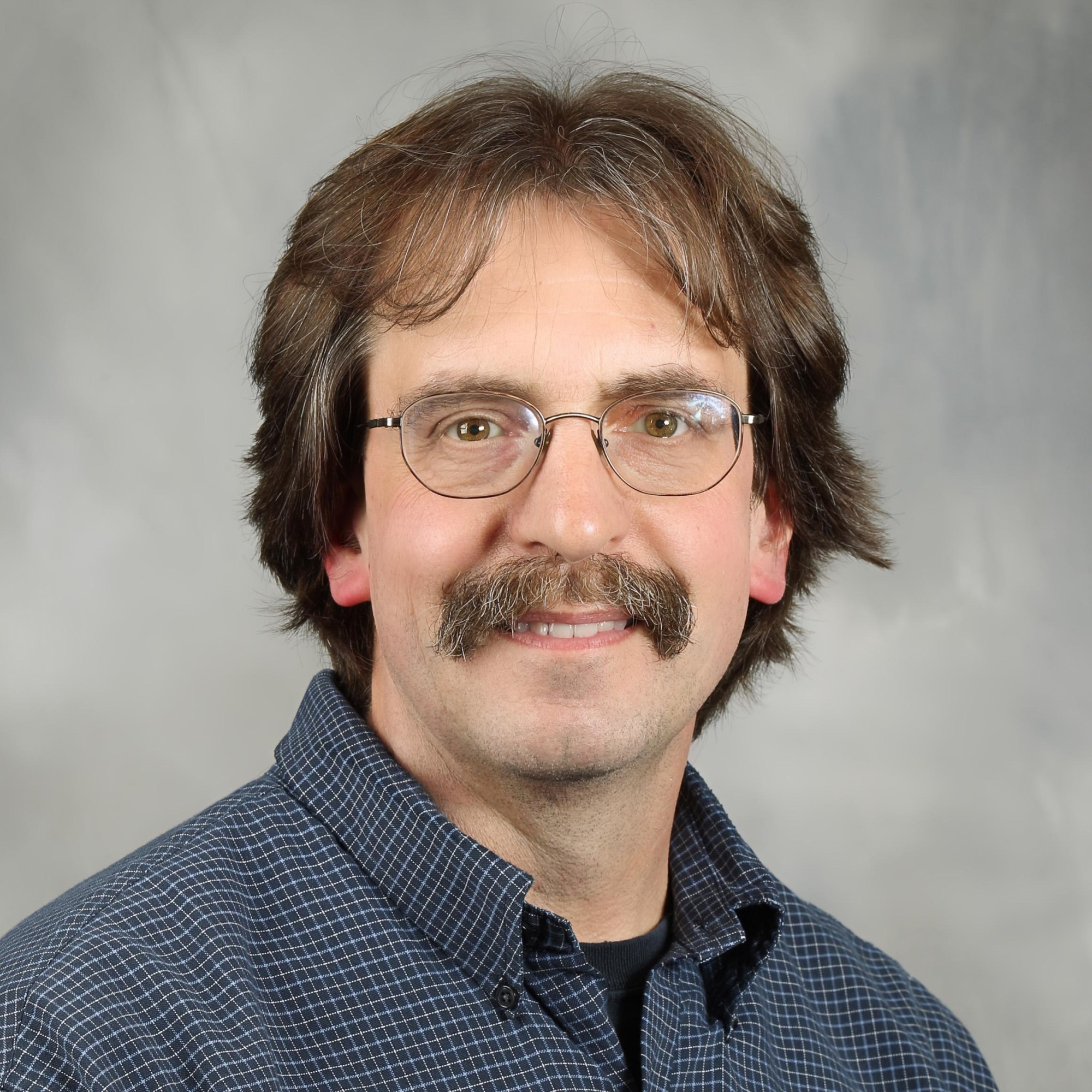 Jim Moses is a composer, sound designer, engineer/producer, and educator. He has worked extensively in electronic/experimental music, and audio producing and engineering for music, radio, theater and multimedia. He is currently senior lecturer and technical director at the Brown University Department of Music.
Jim Moses is a composer, sound designer, engineer/producer, and educator. He has worked extensively in electronic/experimental music, and audio producing and engineering for music, radio, theater and multimedia. He is currently senior lecturer and technical director at the Brown University Department of Music.
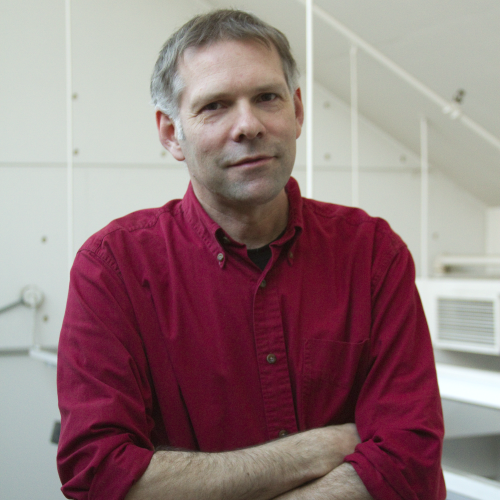 Ed Osborn works with many forms of electronic media including installation, video, sound, and performance. He has presented his work at the San Francisco Museum of Modern Art, the singuhr-hörgalerie (Berlin), the Berkeley Art Museum, Artspace (Sydney), the Institute of Modern Art (Brisbane), the ZKM Center for Art and Media (Karlsruhe), Kiasma (Helsinki), MassMOCA (North Adams), the Yale University Art Gallery, and the Sonic Arts Research Centre (Belfast). Osborn has received grants from the Guggenheim Foundation, the Creative Work Fund, and Arts International and been awarded residencies from the DAAD Artists-in-Berlin Program, the Banff Centre for the Arts, Elektronmusikstudion (Stockholm), STEIM (Amsterdam), and EMPAC (Troy, NY). He is Professor of Visual Art and Music at Brown University.
Ed Osborn works with many forms of electronic media including installation, video, sound, and performance. He has presented his work at the San Francisco Museum of Modern Art, the singuhr-hörgalerie (Berlin), the Berkeley Art Museum, Artspace (Sydney), the Institute of Modern Art (Brisbane), the ZKM Center for Art and Media (Karlsruhe), Kiasma (Helsinki), MassMOCA (North Adams), the Yale University Art Gallery, and the Sonic Arts Research Centre (Belfast). Osborn has received grants from the Guggenheim Foundation, the Creative Work Fund, and Arts International and been awarded residencies from the DAAD Artists-in-Berlin Program, the Banff Centre for the Arts, Elektronmusikstudion (Stockholm), STEIM (Amsterdam), and EMPAC (Troy, NY). He is Professor of Visual Art and Music at Brown University.
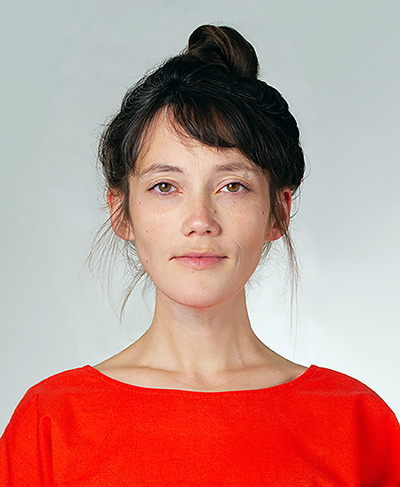 Allyson Packer is a video artist whose work examines our uneasy relationship to a dematerializing world. Her exhibitions span globally at venues including Vapaan Taiteen Tila in Helsinki, Hošek Contemporary in Berlin, the Torrance Museum of Art in Los Angeles, La Box in Bourges, France, and the OSTRALE Biennale in Dresden, Germany. In 2023, she completed the public art commission CR Y for the Artichoke Trust in London and has held screenings at venues including Ada X in Montreal, Columbia Digital Futures Institute in New York, and DIS.art. Awards and residencies include the Cité Internationale des Arts Residency in Paris, the La Box Artist Residency at l’École Nationale Supérieure d'Art de Bourges, and the 2024 Prospect Art 4th Wall
Allyson Packer is a video artist whose work examines our uneasy relationship to a dematerializing world. Her exhibitions span globally at venues including Vapaan Taiteen Tila in Helsinki, Hošek Contemporary in Berlin, the Torrance Museum of Art in Los Angeles, La Box in Bourges, France, and the OSTRALE Biennale in Dresden, Germany. In 2023, she completed the public art commission CR Y for the Artichoke Trust in London and has held screenings at venues including Ada X in Montreal, Columbia Digital Futures Institute in New York, and DIS.art. Awards and residencies include the Cité Internationale des Arts Residency in Paris, the La Box Artist Residency at l’École Nationale Supérieure d'Art de Bourges, and the 2024 Prospect Art 4th Wall
Fellowship. Her work has also been featured in publications including
The Guardian, Artmirror, and the Centre Pompidou’s Journal de l'Université d'été de la Bibliothèque Kandinsky. Based in Brooklyn, Packer is Teaching Assistant Professor of Visual Art & Technology at Stevens Institute of Technology and is represented by birds + Richard in Berlin.
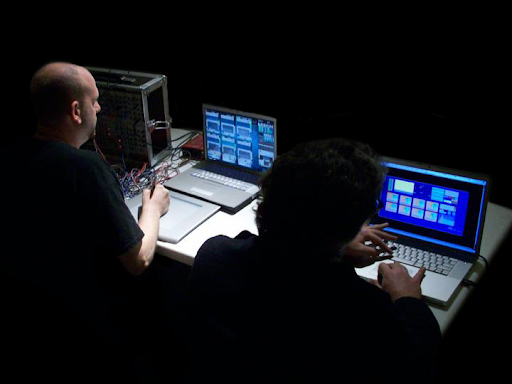 A collaboration between Mark Cetilia and Joe Cantrell, Redux exists as an exercise in destruction and recombination. We examine existing technologies, break them down to their essential components, and re-assemble them into new entities. This practice brings new ideas to light about not only the nature of our technological objects, but also the structures that enable them to exist. In rethinking how systems can be perceived, new ways of using and combining them can be enabled. This includes natural ecosystems, technological infrastructure, and societal interconnections. Redux is the cut that cures — the mosaic that can only emerge when the original is shattered.
A collaboration between Mark Cetilia and Joe Cantrell, Redux exists as an exercise in destruction and recombination. We examine existing technologies, break them down to their essential components, and re-assemble them into new entities. This practice brings new ideas to light about not only the nature of our technological objects, but also the structures that enable them to exist. In rethinking how systems can be perceived, new ways of using and combining them can be enabled. This includes natural ecosystems, technological infrastructure, and societal interconnections. Redux is the cut that cures — the mosaic that can only emerge when the original is shattered.
Redux was awarded a multi-year grant in Emerging Fields from the Creative Capital Foundation for their monolithic sound installation Callspace, which uses cellular technologies to explore the audio potentials of unutilized, inaccessible space. Their work has been presented by The Dog Star Orchestra (Los Angeles, CA) and installed at the Société des arts technologiques (Montréal, QC), Machines with Magnets (Providence, RI), and SoundWalk (Long Beach, CA). They have performed at such venues as REDCAT / Disney Hall (Los Angeles, CA), XFest (Dorchester, MA), Black Lace (Providence, RI), Cold Spring Hollow (Belchertown, MA), and Wave Farm (Acra, NY).
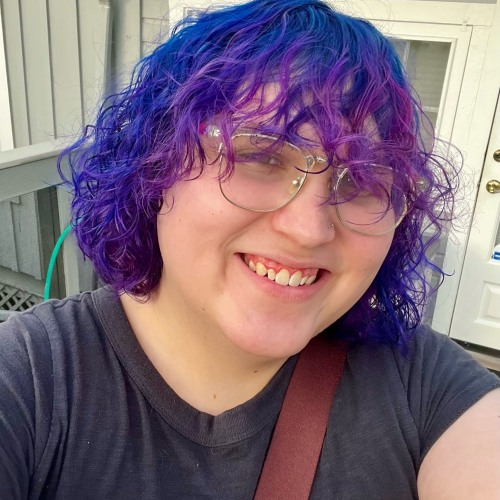 Sofía Rocha writes music of uncompromising emotional intensity while exploring cognition, randomness, rhythm, and counterpoint in post-tonal frameworks. Recent projects include new works for the International Contemporary Ensemble, Emory University Symphony Orchestra and New York Youth Symphony. Sofía is a PhD student in Music and Multimedia Composition at Brown and received her master’s in composition at the University of Missouri-Kansas City, studying primarily with Yotam Haber and Chen Yi. She received her BA from Gettysburg College, studying with Avner Dorman.
Sofía Rocha writes music of uncompromising emotional intensity while exploring cognition, randomness, rhythm, and counterpoint in post-tonal frameworks. Recent projects include new works for the International Contemporary Ensemble, Emory University Symphony Orchestra and New York Youth Symphony. Sofía is a PhD student in Music and Multimedia Composition at Brown and received her master’s in composition at the University of Missouri-Kansas City, studying primarily with Yotam Haber and Chen Yi. She received her BA from Gettysburg College, studying with Avner Dorman.
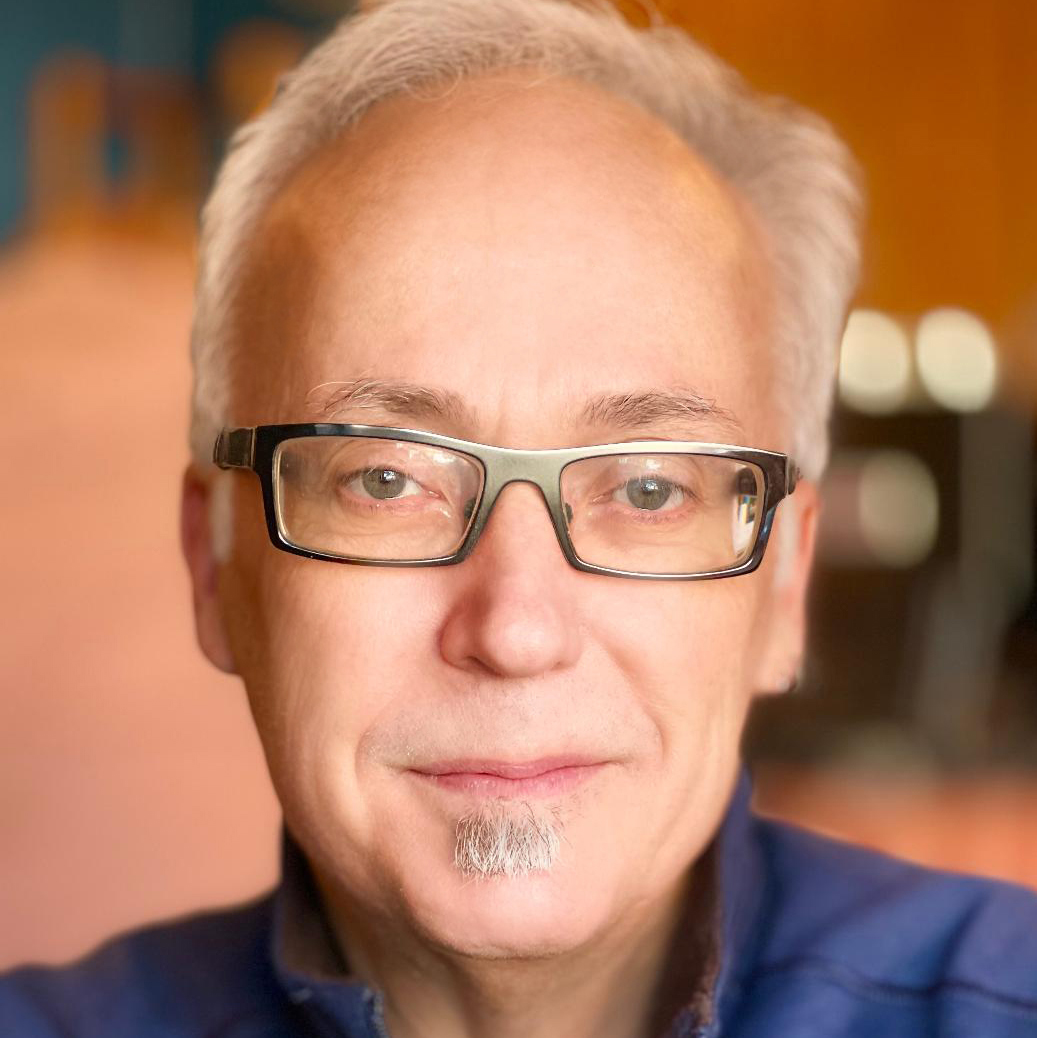 Joseph Butch Rovan is a composer, performer, media artist, and instrument designer who has served on the faculty of the department of Music at Brown University since 2004.
Joseph Butch Rovan is a composer, performer, media artist, and instrument designer who has served on the faculty of the department of Music at Brown University since 2004.
Rovan’s compositions have been performed all over the world, receiving early recognition in two of the Bourges International Electroacoustic Music Competitions as well as a first prize in the Berlin Transmediale Festival. His multipart installation "Let us imagine a straight line" was selected for the 14th WRO International Media Art Biennale in Poland. He has recorded on the Wergo, EMF, Circumvention, and SEAMUS labels.
The design of sensor hardware and wireless microcontroller systems for musical performance represents a central part of Rovan’s creative work, which has yielded two patents. Among his most recent projects are the TOSHI, a new conductor interface for orchestral synthesis, and a new accessible technology that allows non-sighted composers to program interactive computer music. His research has been featured in The Computer Music Journal, including in a special anthology presenting his custom GLOBE controller. A seminal essay written with Vincent Hayward was highly influential for the field of haptics, and a later piece on alternate controllers was included in Riley and Hunter’s “Mapping Landscapes for Performance as Research,” published by Palgrave Macmillan.
Earlier in his career, Rovan served as compositeur en recherche with the Real-Time Systems Team at the Institut de Recherche et Coordination Acoustique/Musique (IRCAM) in Paris, and then as a faculty member at Florida State University and the University of North Texas, where he headed the Center for Experimental Music and Intermedia. At Brown, he directed the Brown Arts Initiative from 2016-19, where he was instrumental in the design and planning of The Lindemann Performing Arts Center.
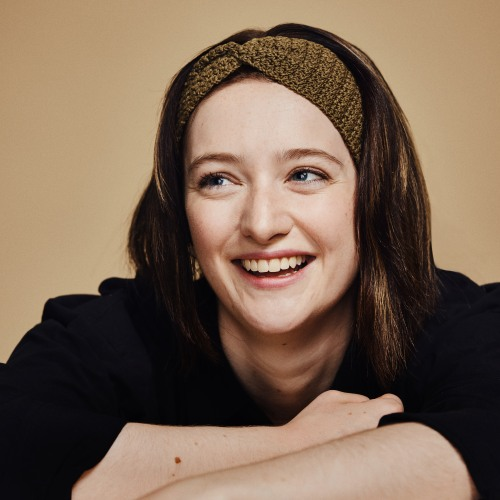 Jessica Shand is a performer-composer and researcher driven by the belief that music can expand our sensibilities. While her early love for dance eventually led her to pick up her primary instrument, the flute, her original solo and ensemble music now calls on an eclectic set of influences—from classical and jazz to electronic music and the avant-garde—to combine flutes, electronics, vocals, and more. She holds an M.S. in Media Arts and Sciences from the Massachusetts Institute of Technology (2024) and a B.A. in Mathematics and Music from Harvard University (2022).
Jessica Shand is a performer-composer and researcher driven by the belief that music can expand our sensibilities. While her early love for dance eventually led her to pick up her primary instrument, the flute, her original solo and ensemble music now calls on an eclectic set of influences—from classical and jazz to electronic music and the avant-garde—to combine flutes, electronics, vocals, and more. She holds an M.S. in Media Arts and Sciences from the Massachusetts Institute of Technology (2024) and a B.A. in Mathematics and Music from Harvard University (2022).
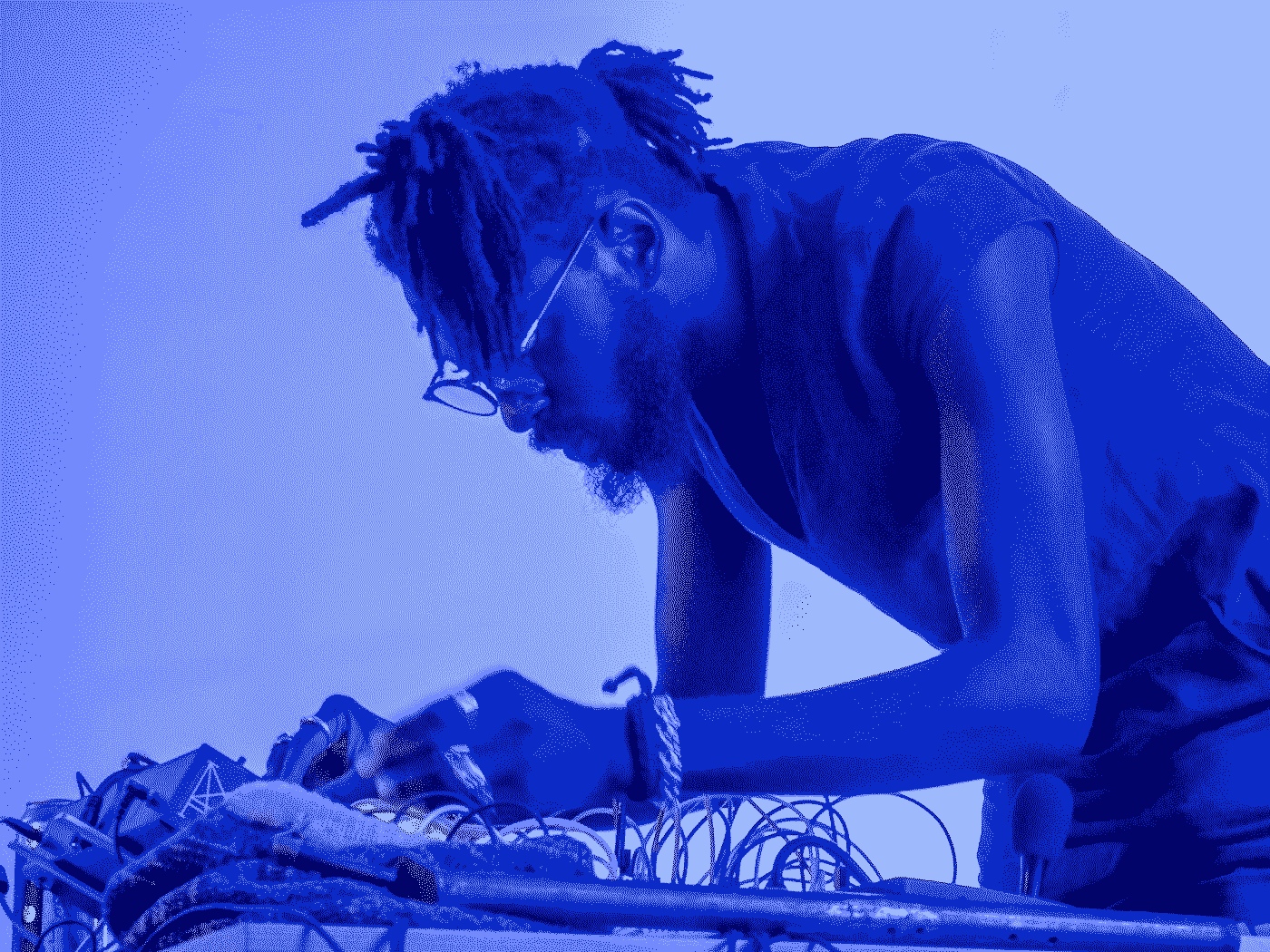 Femi Shonuga-Fleming is an architect and sound artist from New York who works with various synthesis techniques and live coding languages to discuss the organic within electronics and technology through sound art and composition. His work explores the intersections of sound and space though spatial audio and architectural design as an experimental practice. He’s most interested in generative systems, chance, texture within sonic soundscapes. Femi’s architectural work explores indigenous ritual practice as a vessel for conversation between sound, space and interactions of the body. Femi has been performing as a solo experimental electronic improvisation artist since 2018 as sadnoise. Musical and Festival performances include Ende Tymes (2022, New York), Creative Code Festival (2020, New York), Waterworks Festival (2024), Slabfest (2024), amongst others.
Femi Shonuga-Fleming is an architect and sound artist from New York who works with various synthesis techniques and live coding languages to discuss the organic within electronics and technology through sound art and composition. His work explores the intersections of sound and space though spatial audio and architectural design as an experimental practice. He’s most interested in generative systems, chance, texture within sonic soundscapes. Femi’s architectural work explores indigenous ritual practice as a vessel for conversation between sound, space and interactions of the body. Femi has been performing as a solo experimental electronic improvisation artist since 2018 as sadnoise. Musical and Festival performances include Ende Tymes (2022, New York), Creative Code Festival (2020, New York), Waterworks Festival (2024), Slabfest (2024), amongst others.
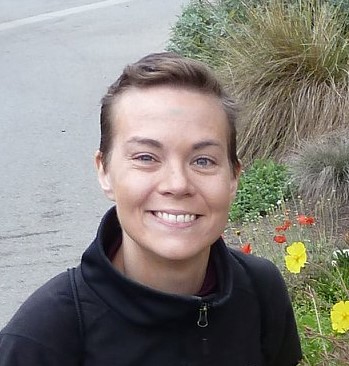 Jess Skyleson (they/them) is a former aerospace engineer and Ayurvedic practitioner who began writing poetry after being diagnosed with stage IV cancer at age 39. Currently in remission, they're now pursuing an MFA in Digital + Media at Rhode Island School of Design, with particular interests in narrative medicine, computational poetry, and sonic art. Their poetry has appeared in journals and anthologies throughout the US and UK, and they were awarded the International Hippocrates Poetry and Medicine Prize, an Excellence Award in Gallery Nat's London Contemporary Art Review Exhibition, an Honorable Mention in the Tor House Poetry Prize, and were a finalist for the Yemassee Poetry Prize and Kalanithi Writing Award. They are presently exploring the integration of the body, poetry, and sound, and one of their sound poetry projects was selected for the Data Sonification Awards as well as exhibited in the New Media category at Brown University’s Ivy Film Festival. Jess facilitates creative writing and art workshops for patients, medical providers, and caregivers, and they are hoping to develop collaborative pathways across art mediums and personal/professional experiences of medicine.
Jess Skyleson (they/them) is a former aerospace engineer and Ayurvedic practitioner who began writing poetry after being diagnosed with stage IV cancer at age 39. Currently in remission, they're now pursuing an MFA in Digital + Media at Rhode Island School of Design, with particular interests in narrative medicine, computational poetry, and sonic art. Their poetry has appeared in journals and anthologies throughout the US and UK, and they were awarded the International Hippocrates Poetry and Medicine Prize, an Excellence Award in Gallery Nat's London Contemporary Art Review Exhibition, an Honorable Mention in the Tor House Poetry Prize, and were a finalist for the Yemassee Poetry Prize and Kalanithi Writing Award. They are presently exploring the integration of the body, poetry, and sound, and one of their sound poetry projects was selected for the Data Sonification Awards as well as exhibited in the New Media category at Brown University’s Ivy Film Festival. Jess facilitates creative writing and art workshops for patients, medical providers, and caregivers, and they are hoping to develop collaborative pathways across art mediums and personal/professional experiences of medicine.
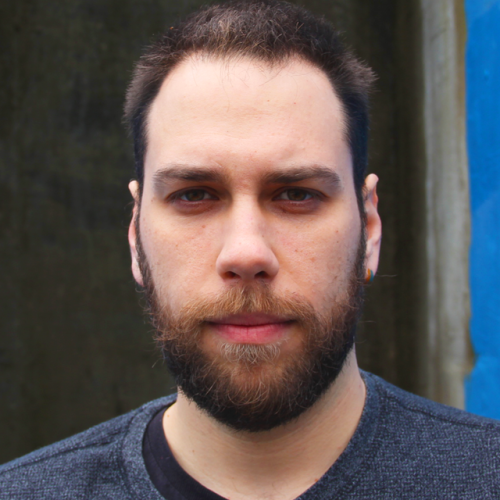 Jake Sokolov-Gonzalez is a musician and educator from New York City whose practice is based equally in free improvisation and tedious technical labor. He’s currently working on very-close-miked, very quiet cello music; a distended piano score for a short film; and a rolling drum’n’bass visual record. He’s been teaching creative music in the NYC public schools since 2013. He produces pop and dance music under the name BABL.
Jake Sokolov-Gonzalez is a musician and educator from New York City whose practice is based equally in free improvisation and tedious technical labor. He’s currently working on very-close-miked, very quiet cello music; a distended piano score for a short film; and a rolling drum’n’bass visual record. He’s been teaching creative music in the NYC public schools since 2013. He produces pop and dance music under the name BABL.
The Studio for Research in Sound and Technology (SRST) at the Rhode Island School of Design provides an environment for inquiry, practice, and technological innovation in the sonic arts and sound design. It serves as a hub for experimentation in design with and of sound, facilitating research in sonic interaction, experience, composition, and performance. SRST hosts a selection of courses where sound or music technology factors as a central medium or subject of study and produces events that facilitate exchange among practitioners and the public.
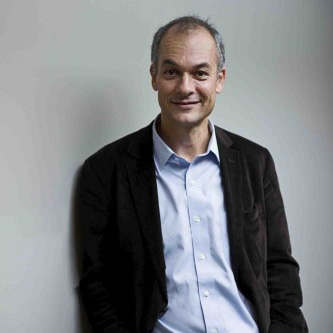 Peter Szendy is David Herlihy University Professor of Humanities and Comparative Literature. Among his publications: Of Stigmatology: Punctuation as Experience (Fordham University Press, 2018); Le Supermarché du visible: Essai d'iconomie (Éditions de Minuit, 2017); All Ears: The Aesthetics of Espionage (Fordham University Press, 2016); Phantom Limbs: On Musical Bodies (Fordham University Press, 2015); Apocalypse-Cinema: 2012 and Other Ends of the World (Fordham University Press, 2015); Kant in the Land of Extraterrestrials: Cosmopolitical Philosofictions (Fordham University Press, 2013). At the Cogut Institute, Szendy leads the Economies of Aesthetics Initiative.
Peter Szendy is David Herlihy University Professor of Humanities and Comparative Literature. Among his publications: Of Stigmatology: Punctuation as Experience (Fordham University Press, 2018); Le Supermarché du visible: Essai d'iconomie (Éditions de Minuit, 2017); All Ears: The Aesthetics of Espionage (Fordham University Press, 2016); Phantom Limbs: On Musical Bodies (Fordham University Press, 2015); Apocalypse-Cinema: 2012 and Other Ends of the World (Fordham University Press, 2015); Kant in the Land of Extraterrestrials: Cosmopolitical Philosofictions (Fordham University Press, 2013). At the Cogut Institute, Szendy leads the Economies of Aesthetics Initiative.
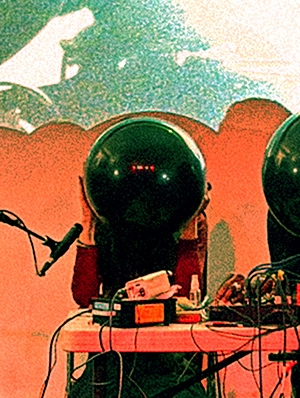 Huichun Yang is a Taiwanese sound artist based in Providence, RI. Her practice explores thresholds, pressure, and the boundaries of bodies through experiments with inflatable materials, DIY electronics, and gestures as transformative effort. She plays instruments that resonate with her body, generate haptic feedback, and conjure her past voice. Her performances center on real-time computing systems and ambisonic environments. Huichun has performed at the SOUND/IMAGE Festival (2024, London), among other events. She has led livecoding workshops at RISD Digital Media and NYU ITP. She is currently pursuing an MFA in Digital Media at RISD.
Huichun Yang is a Taiwanese sound artist based in Providence, RI. Her practice explores thresholds, pressure, and the boundaries of bodies through experiments with inflatable materials, DIY electronics, and gestures as transformative effort. She plays instruments that resonate with her body, generate haptic feedback, and conjure her past voice. Her performances center on real-time computing systems and ambisonic environments. Huichun has performed at the SOUND/IMAGE Festival (2024, London), among other events. She has led livecoding workshops at RISD Digital Media and NYU ITP. She is currently pursuing an MFA in Digital Media at RISD.
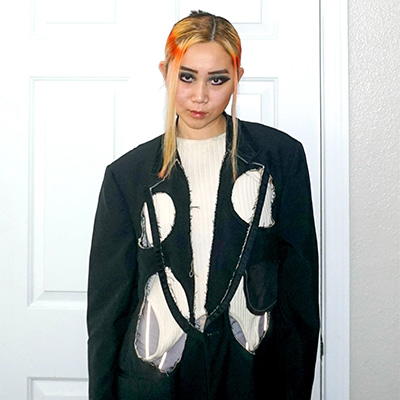 Alice Zhao is a PhD student in Modern Culture and Media at Brown University. She received her M.A. in Curatorial Practices from the University of Southern California, and B.A. in History of Art and Political Science from the University of Pennsylvania. Alice is interested in queer and trans communities’ practices of (un)worlding through fashion and electronic music. Merging theory and practice, she explores the alchemical, affective, and temporal possibilities for Asian diasporic lives fabricated among noise and glitter. She is most recently the co-curator of Wayward Refusals (Los Angeles, October 2023). Her essay on the burlesque and performance artist, activist, and South Korean adoptee Kayla Tange (Coco Ono) is part of the Private Practices collection, the very first archive of AAPI artists and sex workers within the U.S.
Alice Zhao is a PhD student in Modern Culture and Media at Brown University. She received her M.A. in Curatorial Practices from the University of Southern California, and B.A. in History of Art and Political Science from the University of Pennsylvania. Alice is interested in queer and trans communities’ practices of (un)worlding through fashion and electronic music. Merging theory and practice, she explores the alchemical, affective, and temporal possibilities for Asian diasporic lives fabricated among noise and glitter. She is most recently the co-curator of Wayward Refusals (Los Angeles, October 2023). Her essay on the burlesque and performance artist, activist, and South Korean adoptee Kayla Tange (Coco Ono) is part of the Private Practices collection, the very first archive of AAPI artists and sex workers within the U.S.
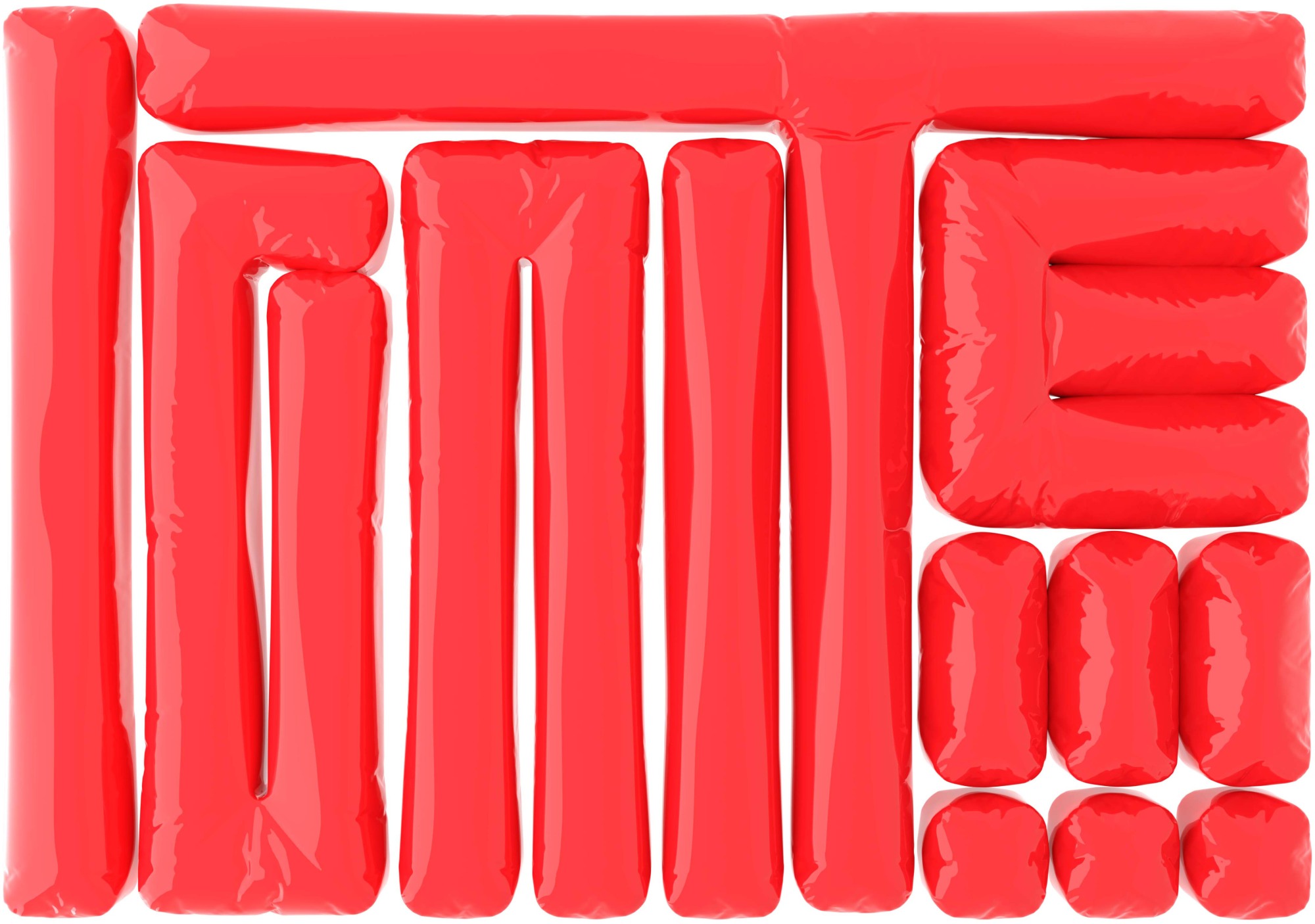
Brown Arts’ IGNITE Series uplifts the spirit of artistic collaboration across Brown, Providence, the Rhode Island region, and beyond. Ignite your creative curiosity through this multi-year series of programs, activations, interventions, and investigations.
